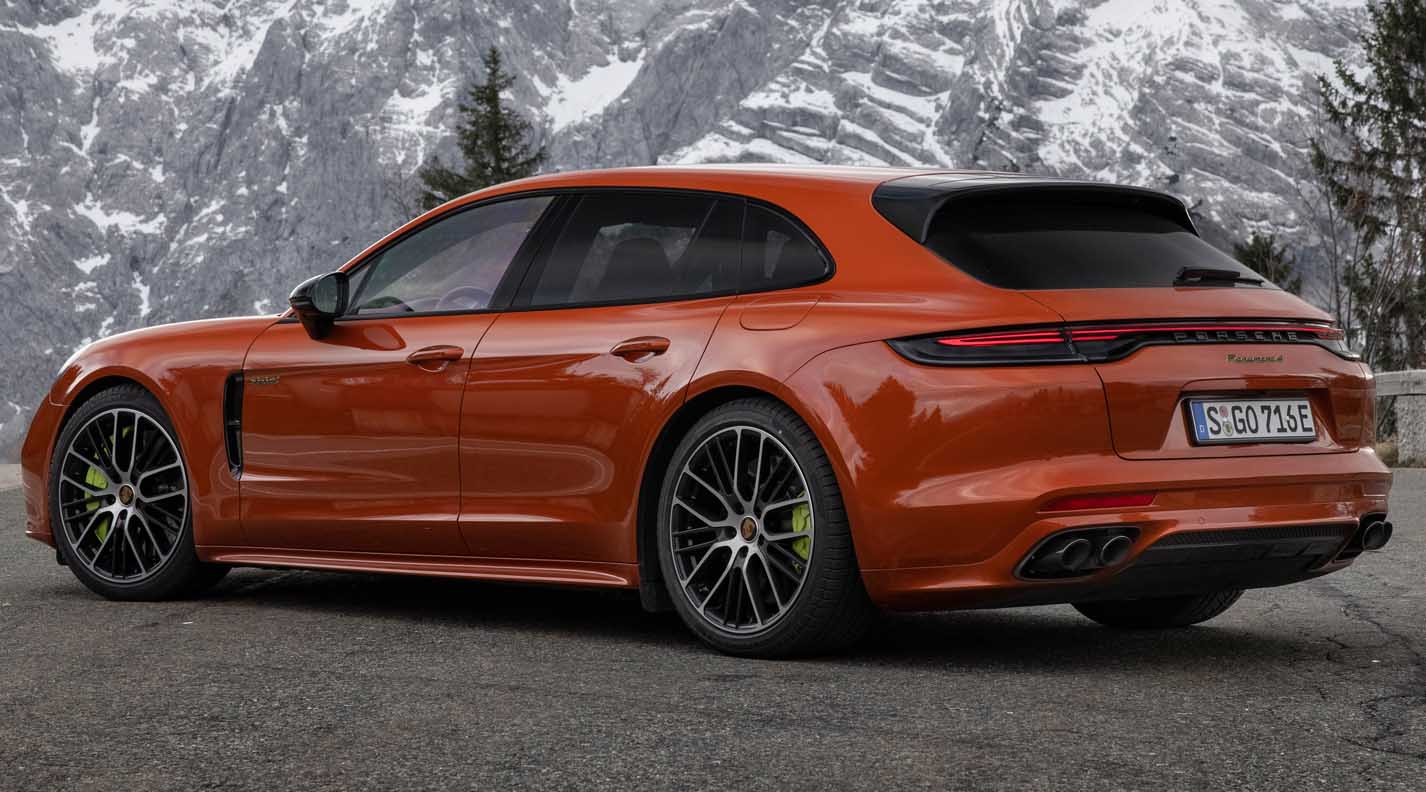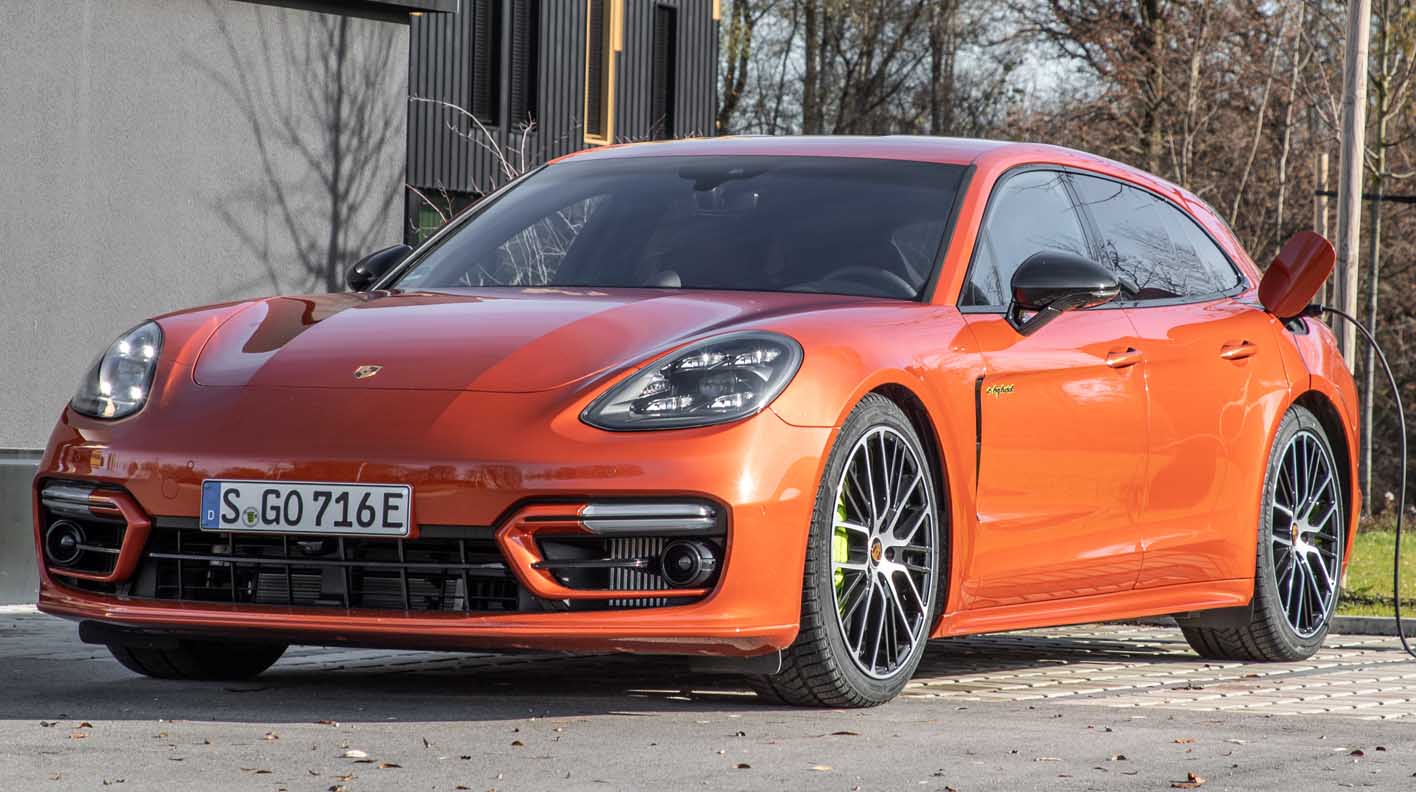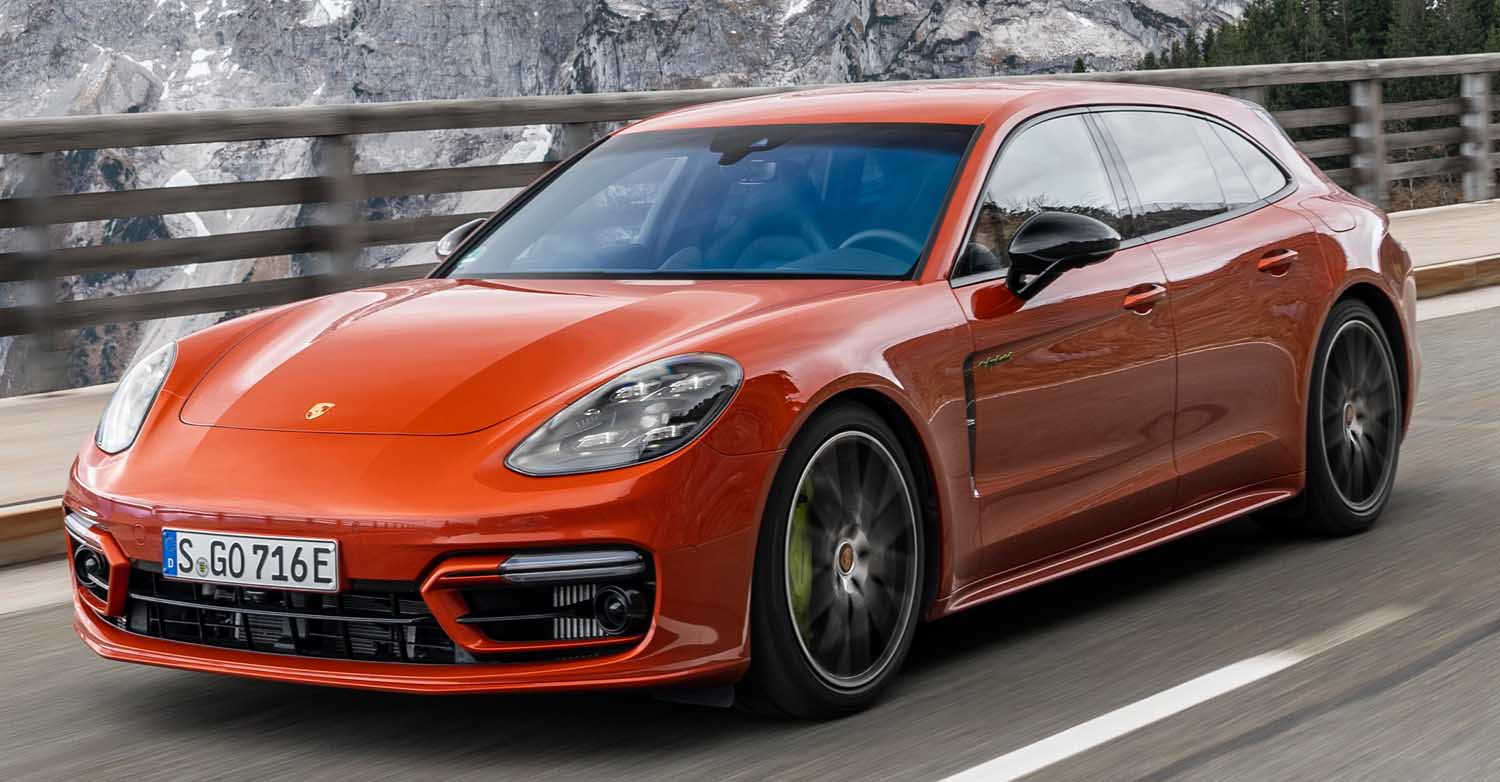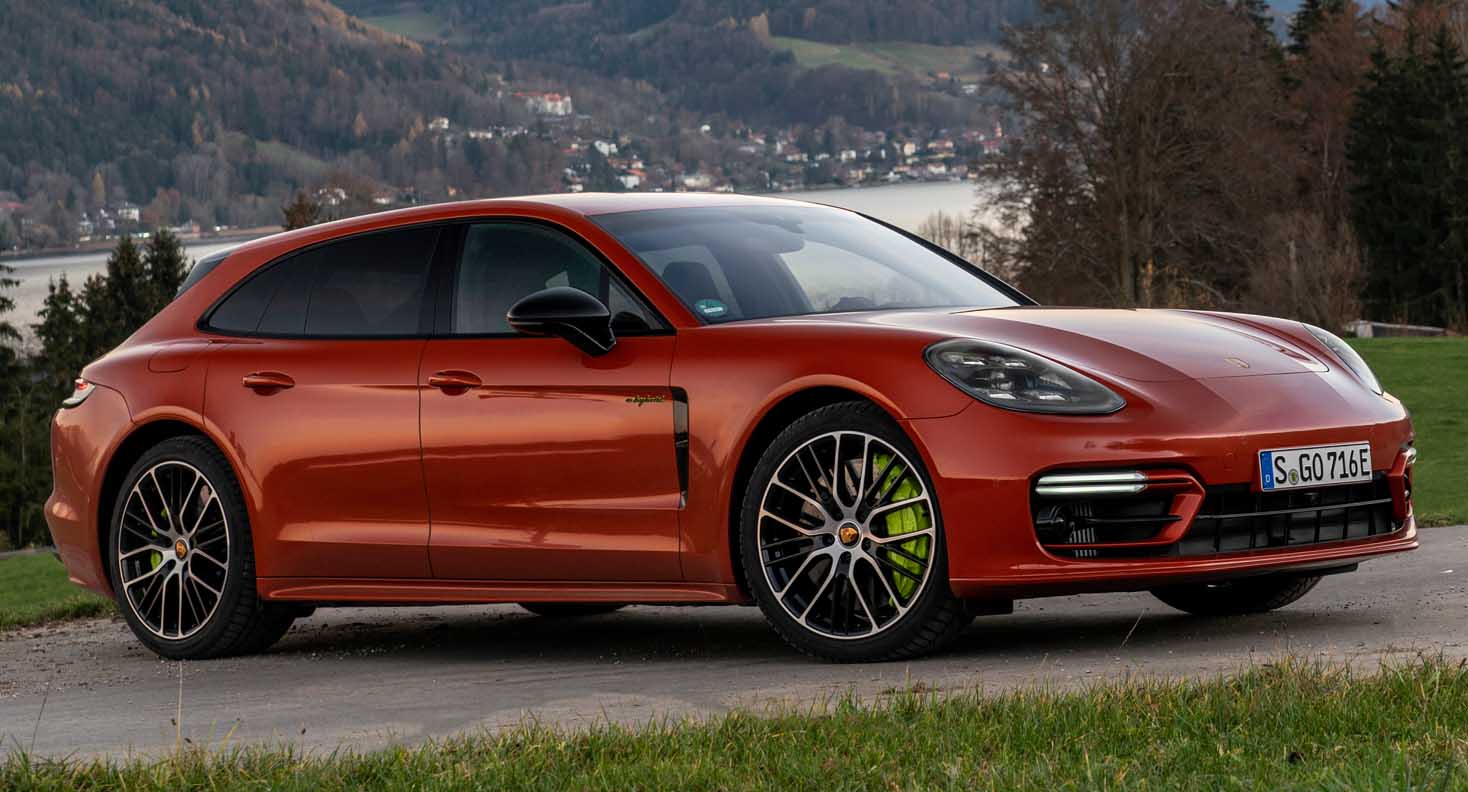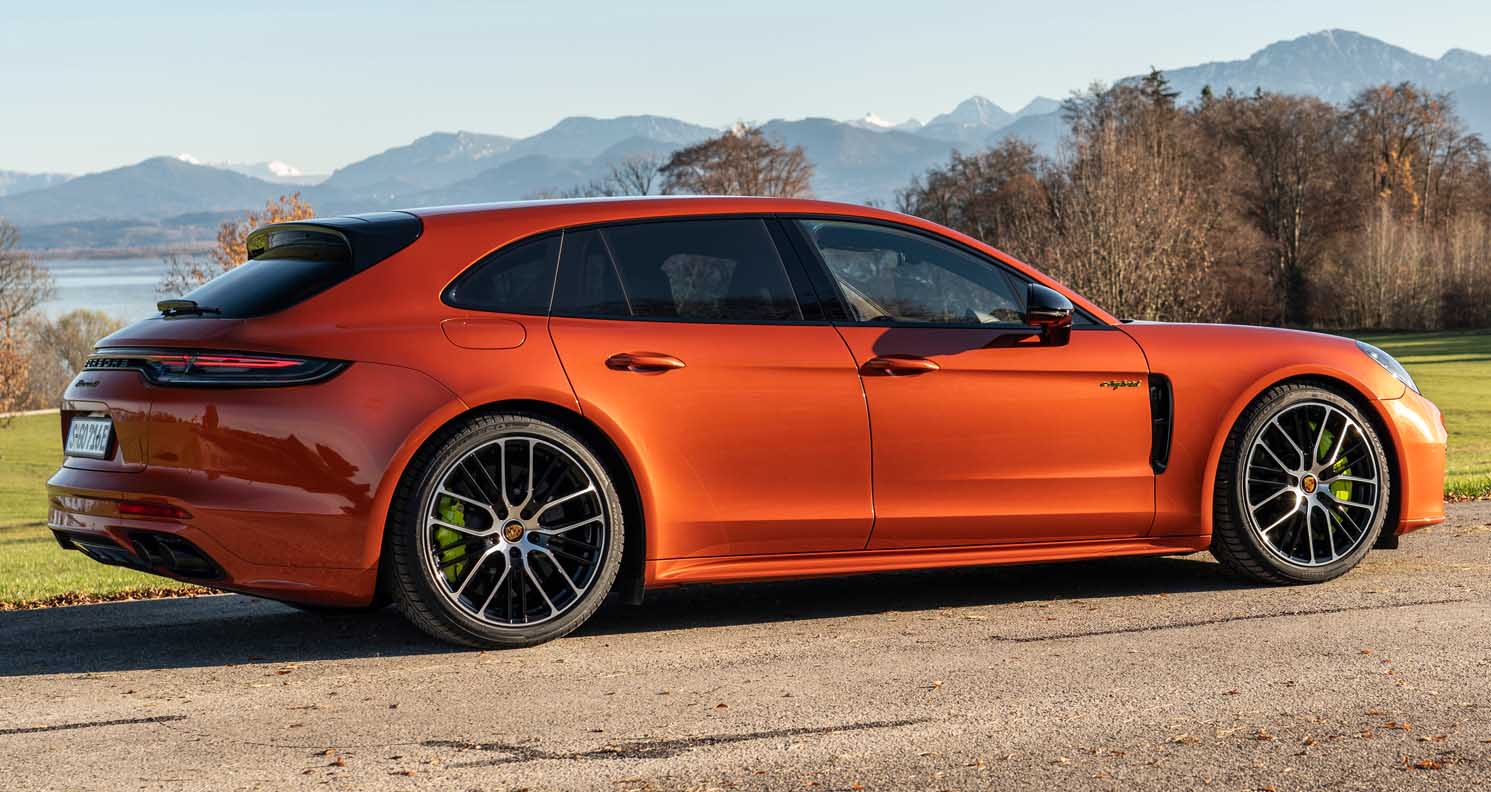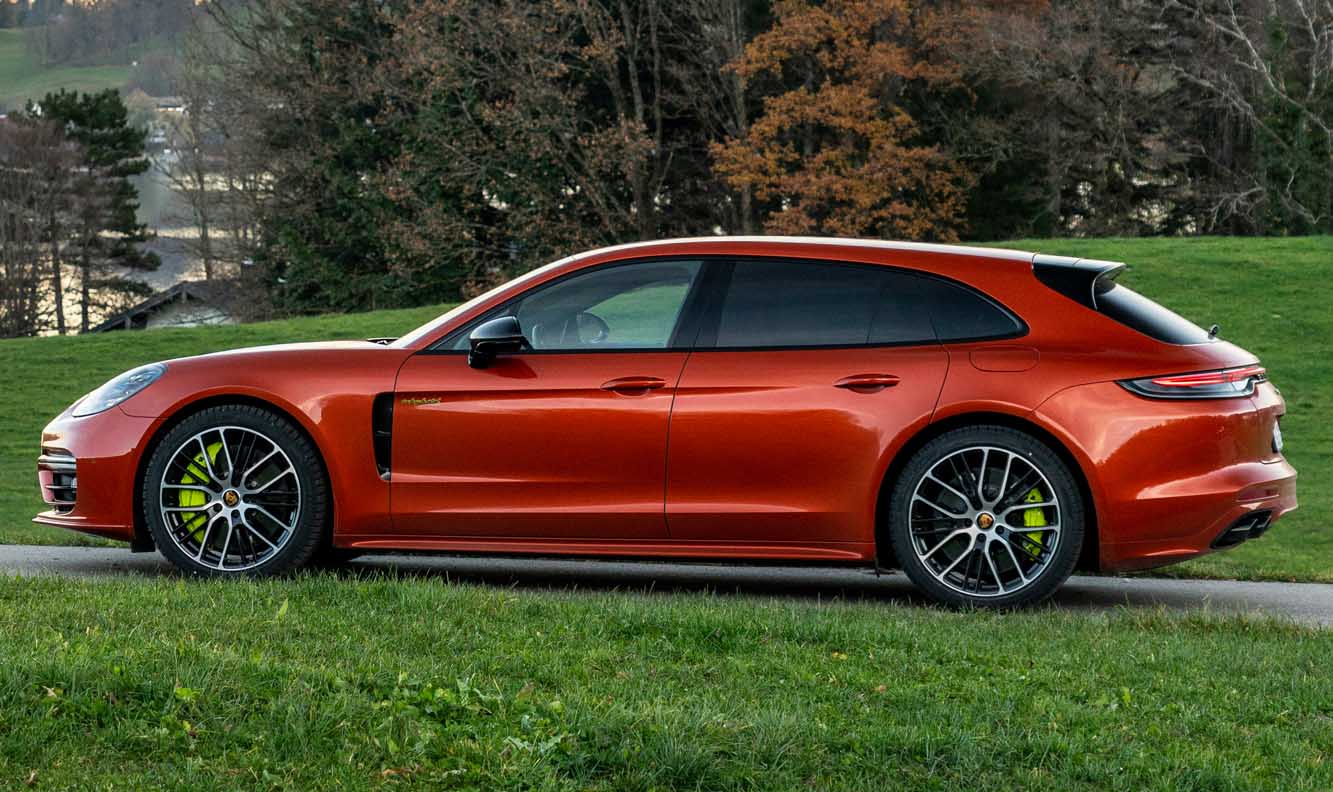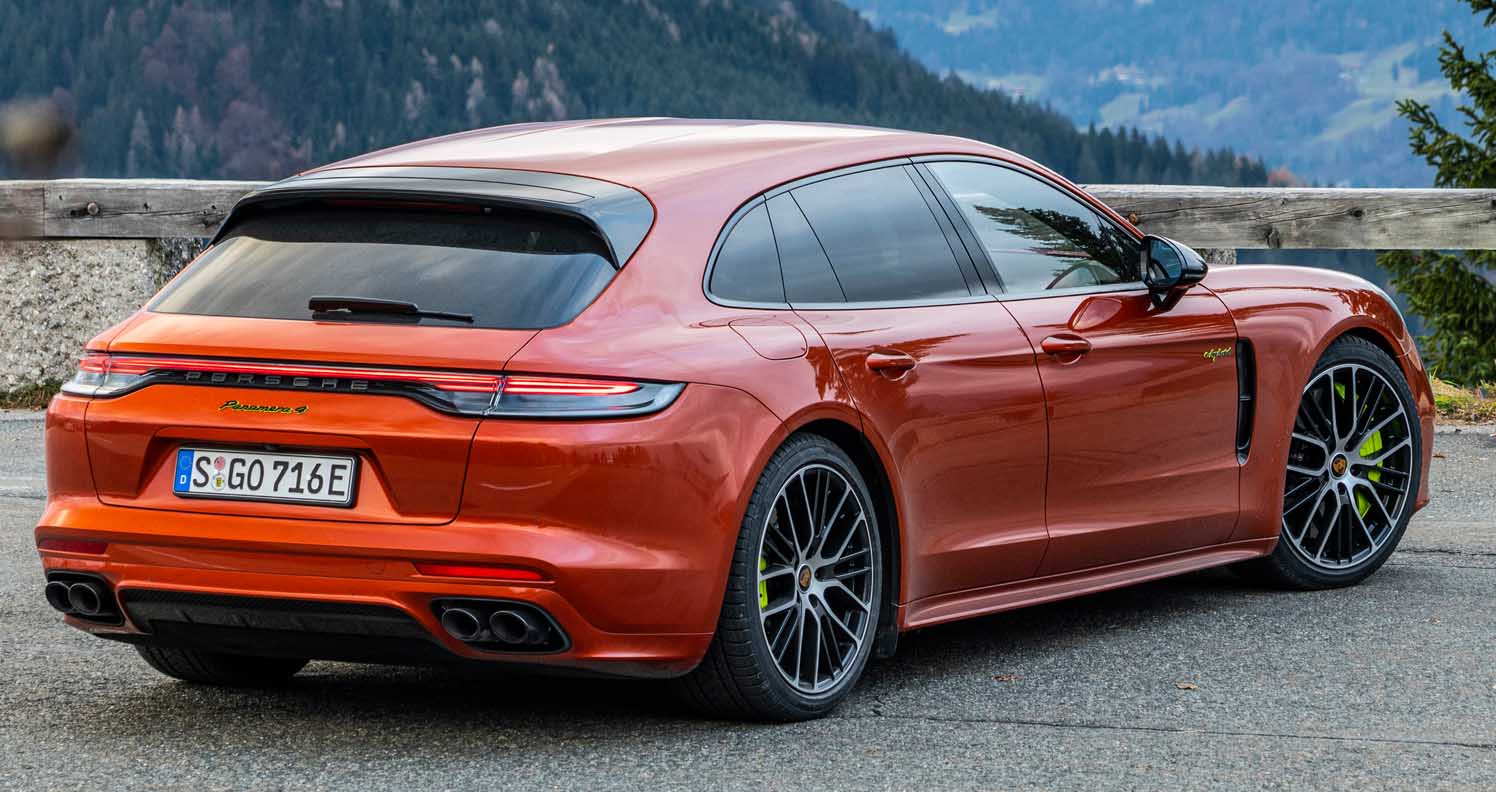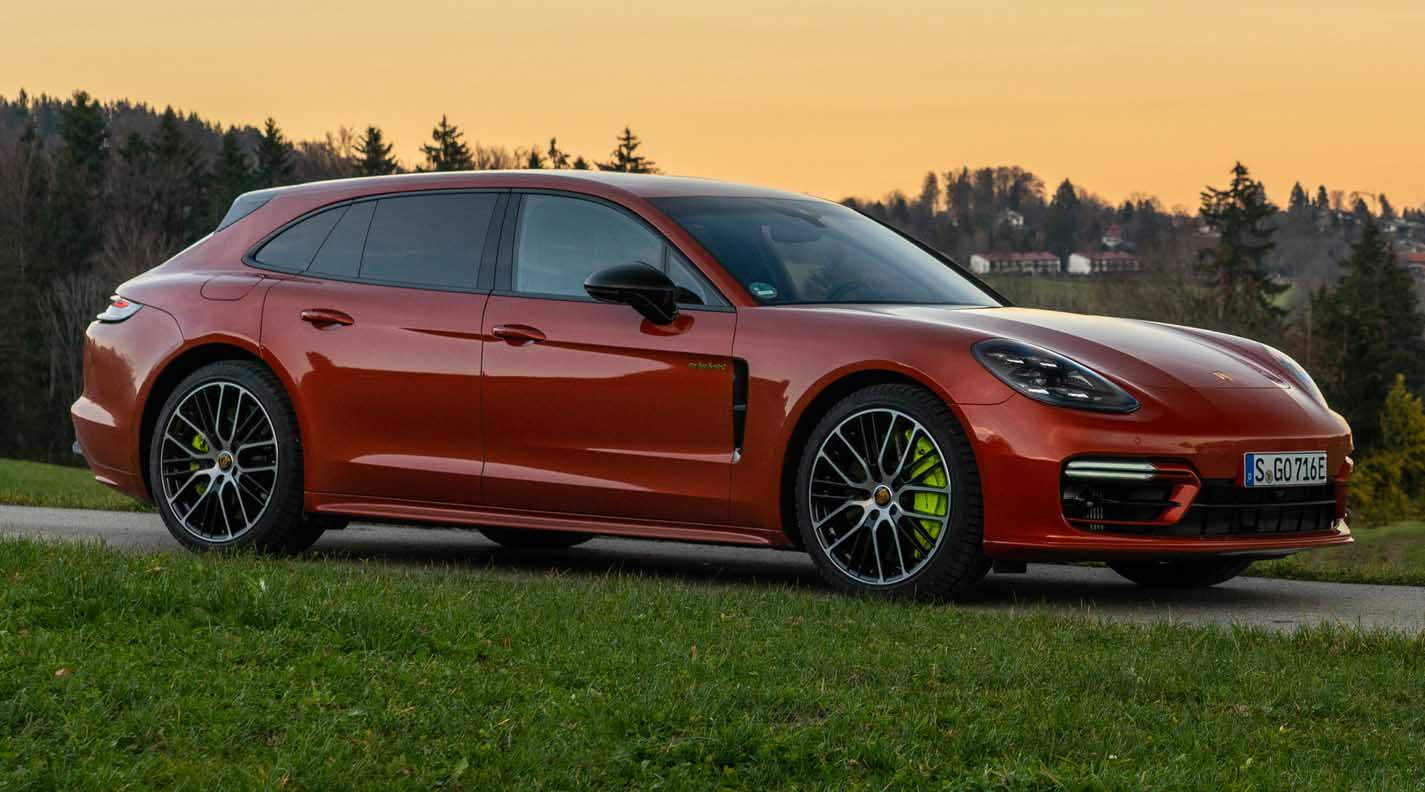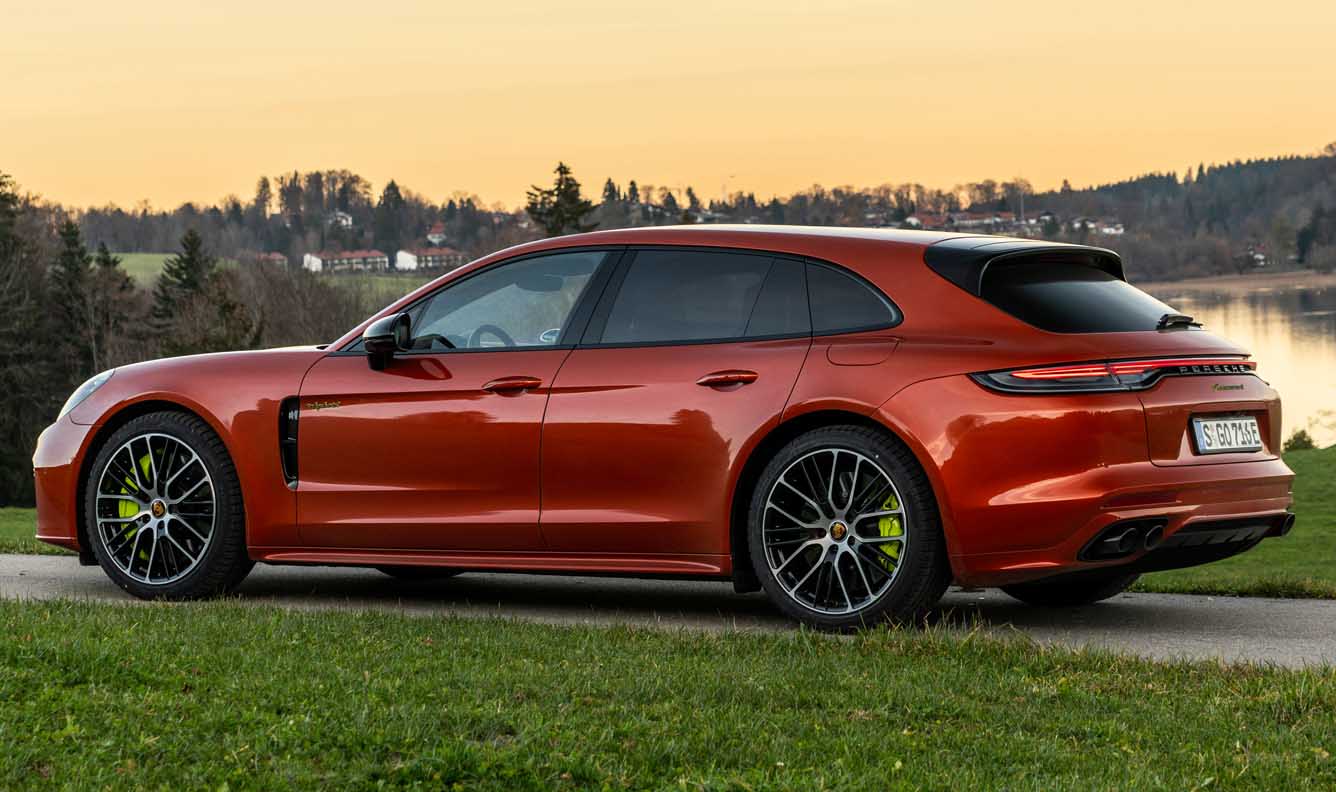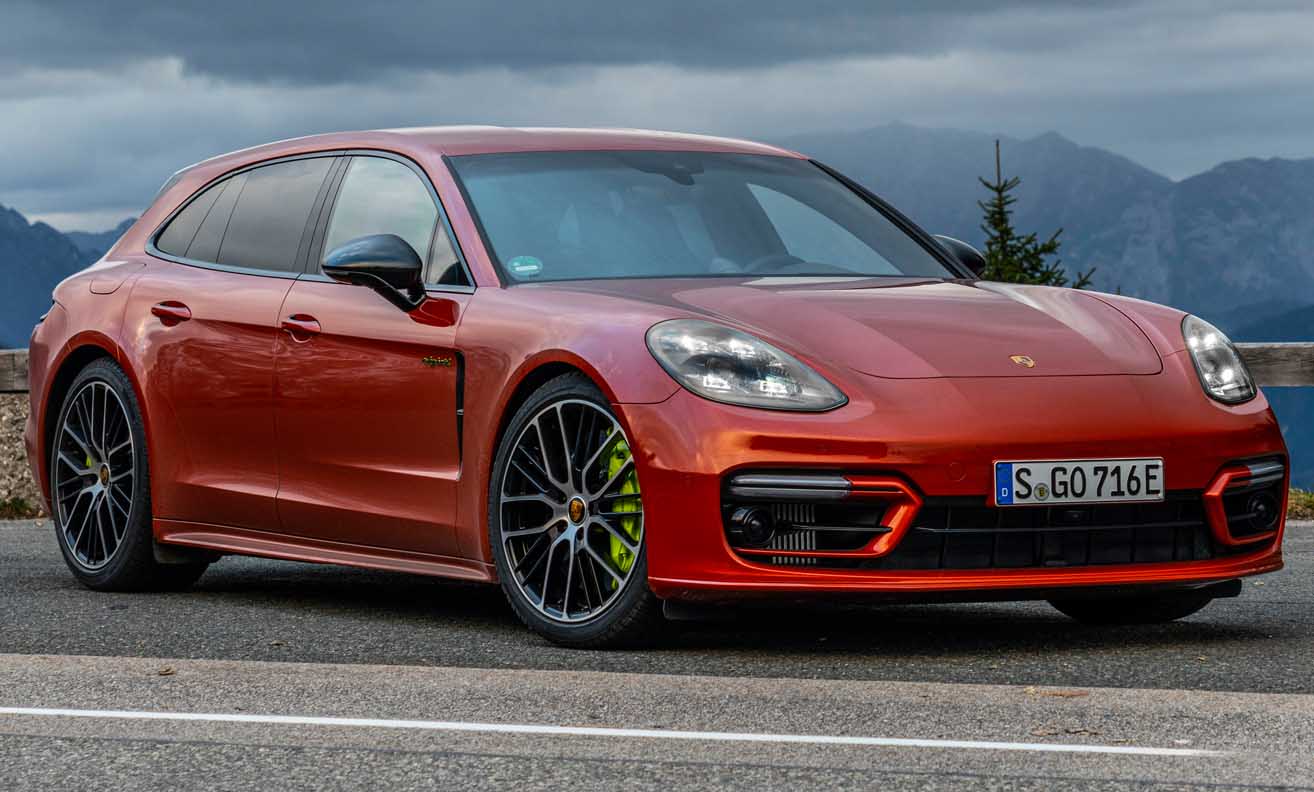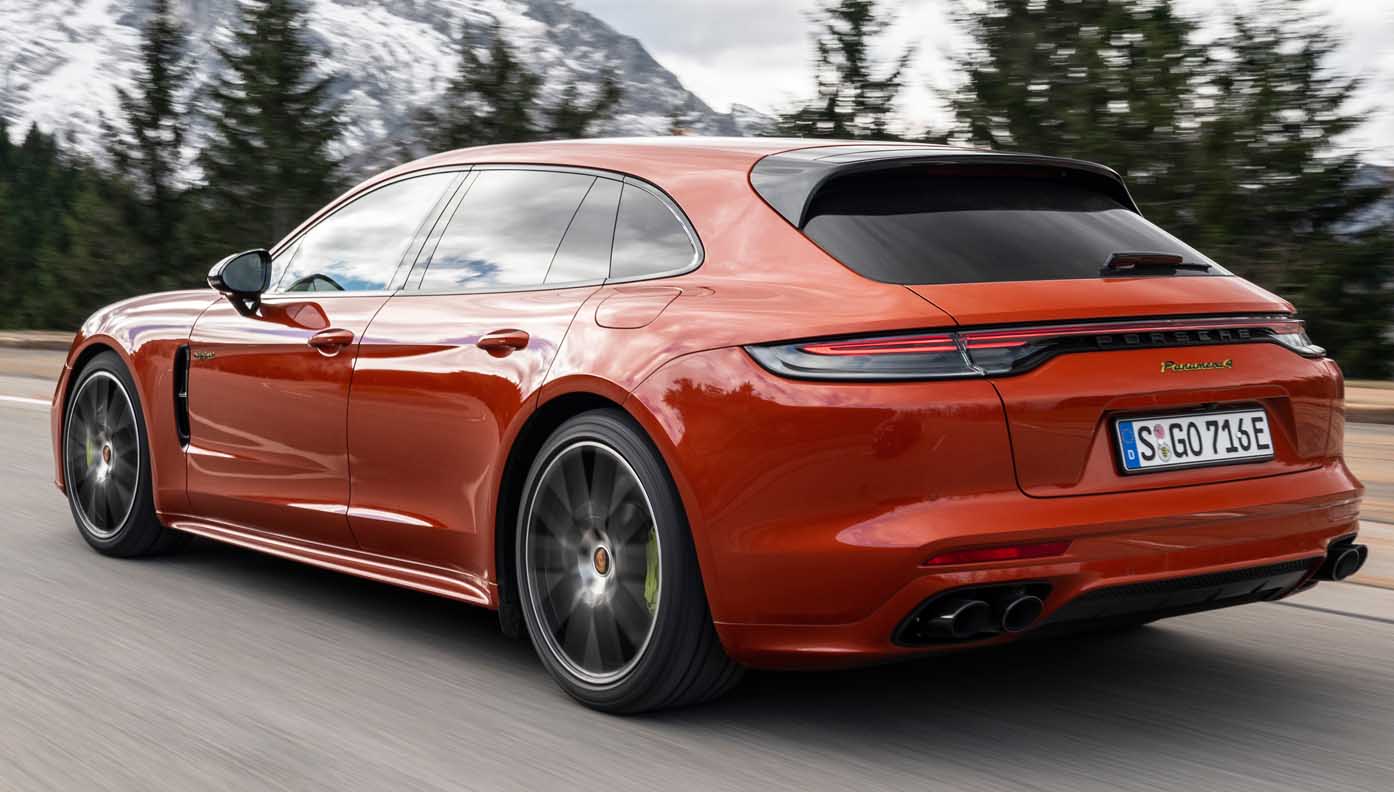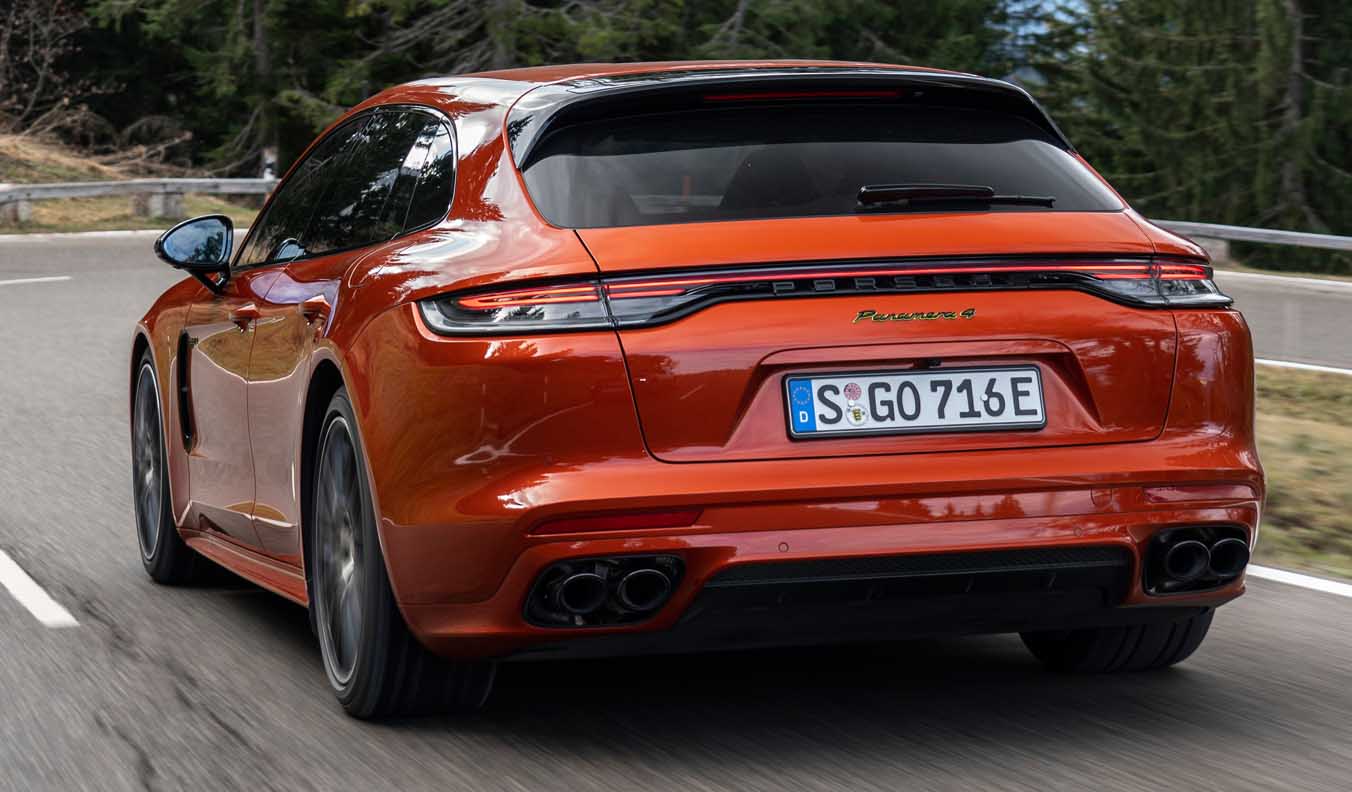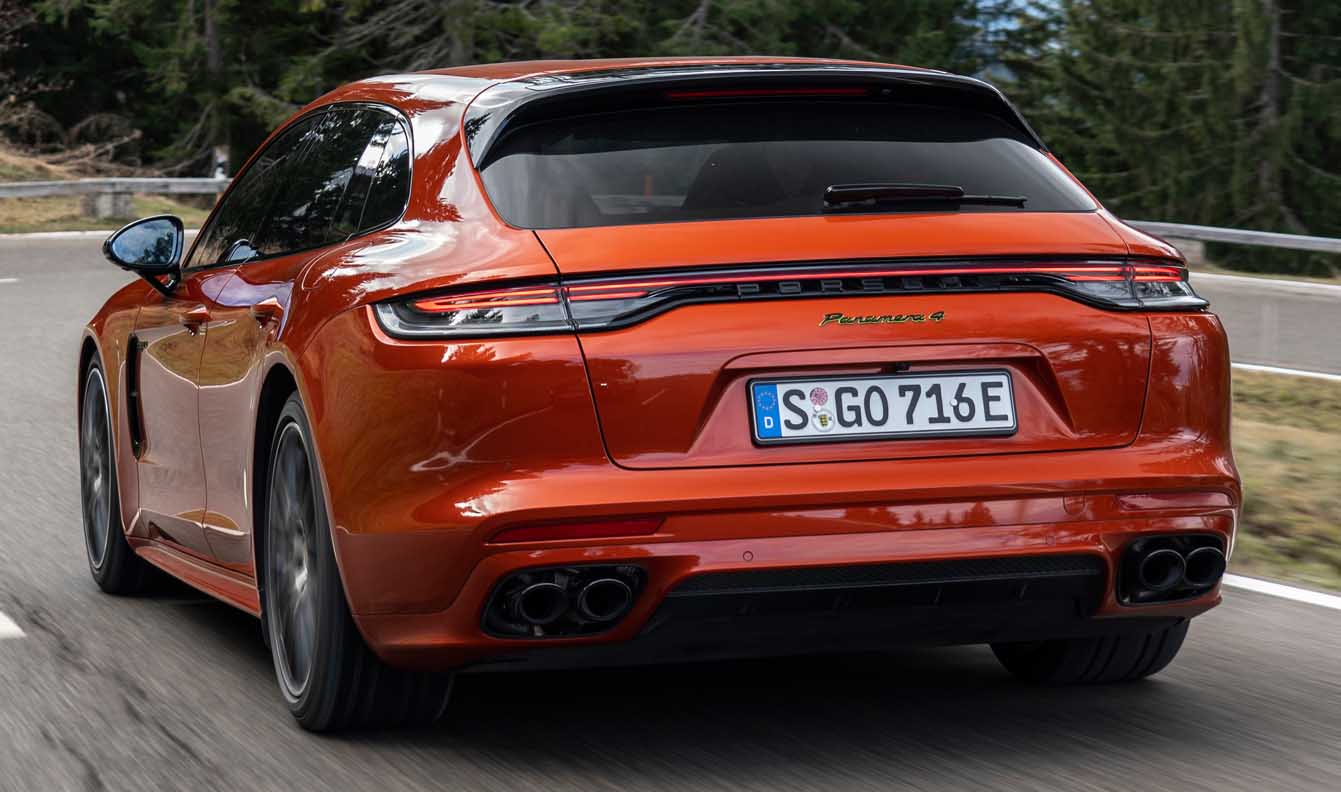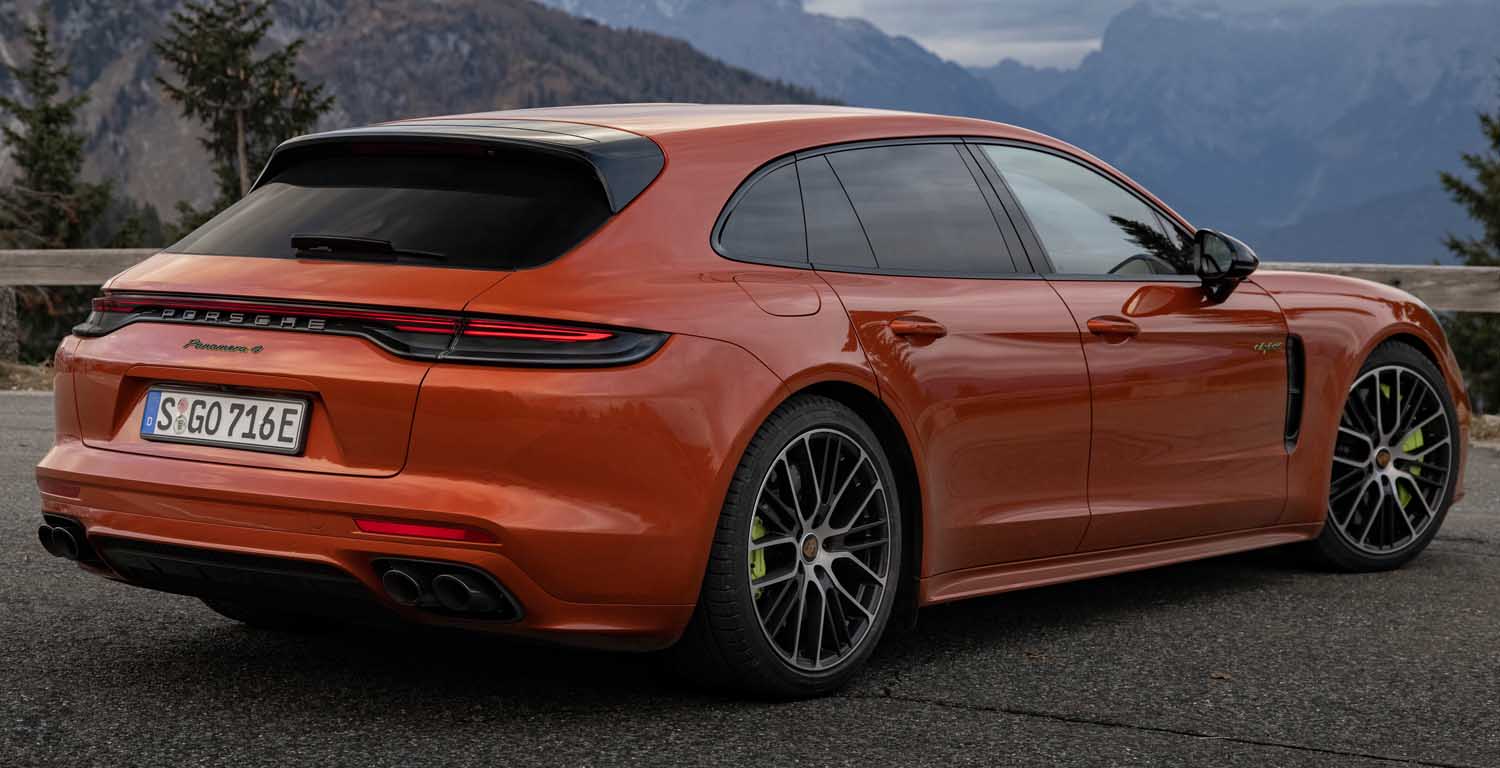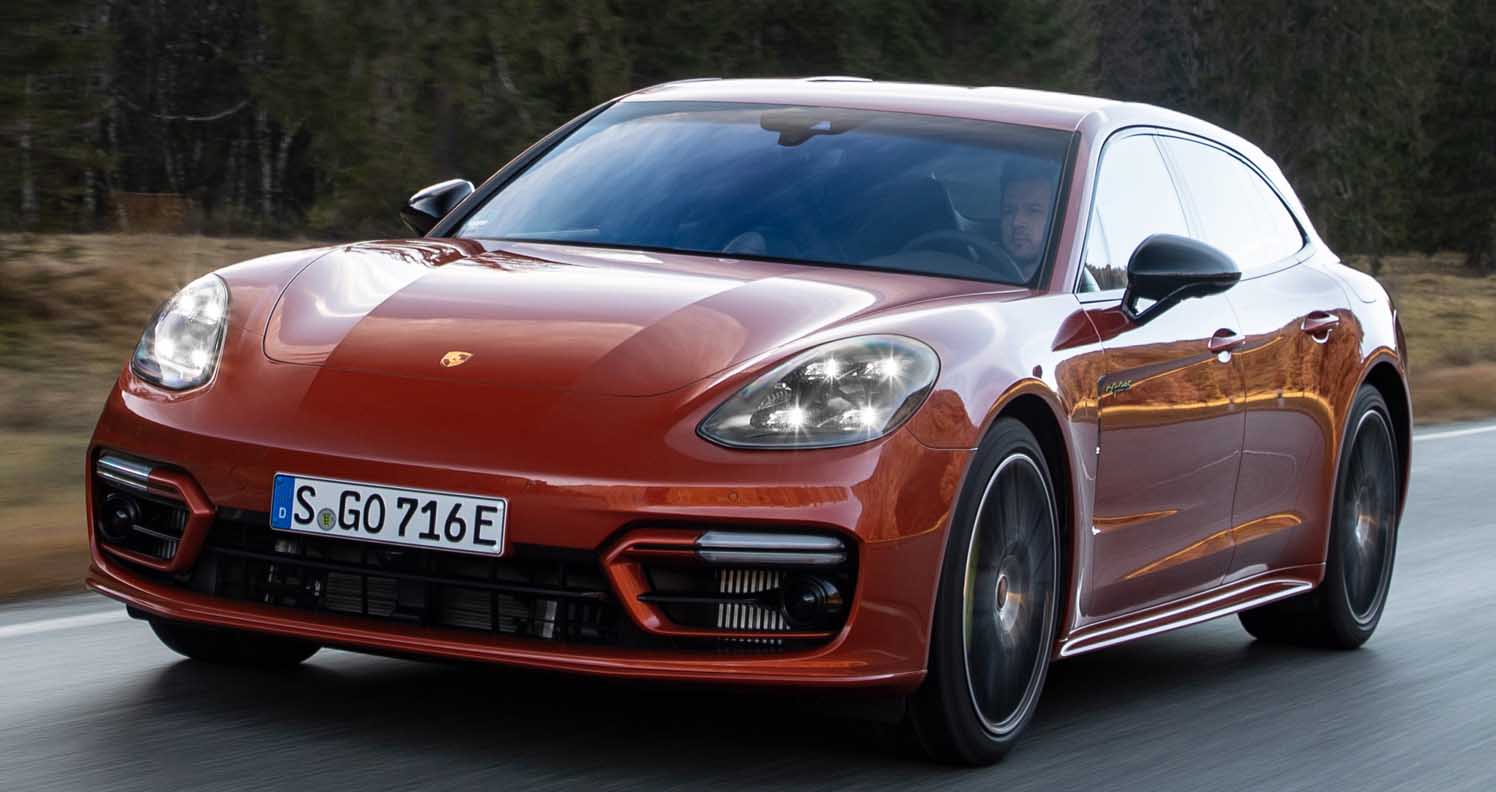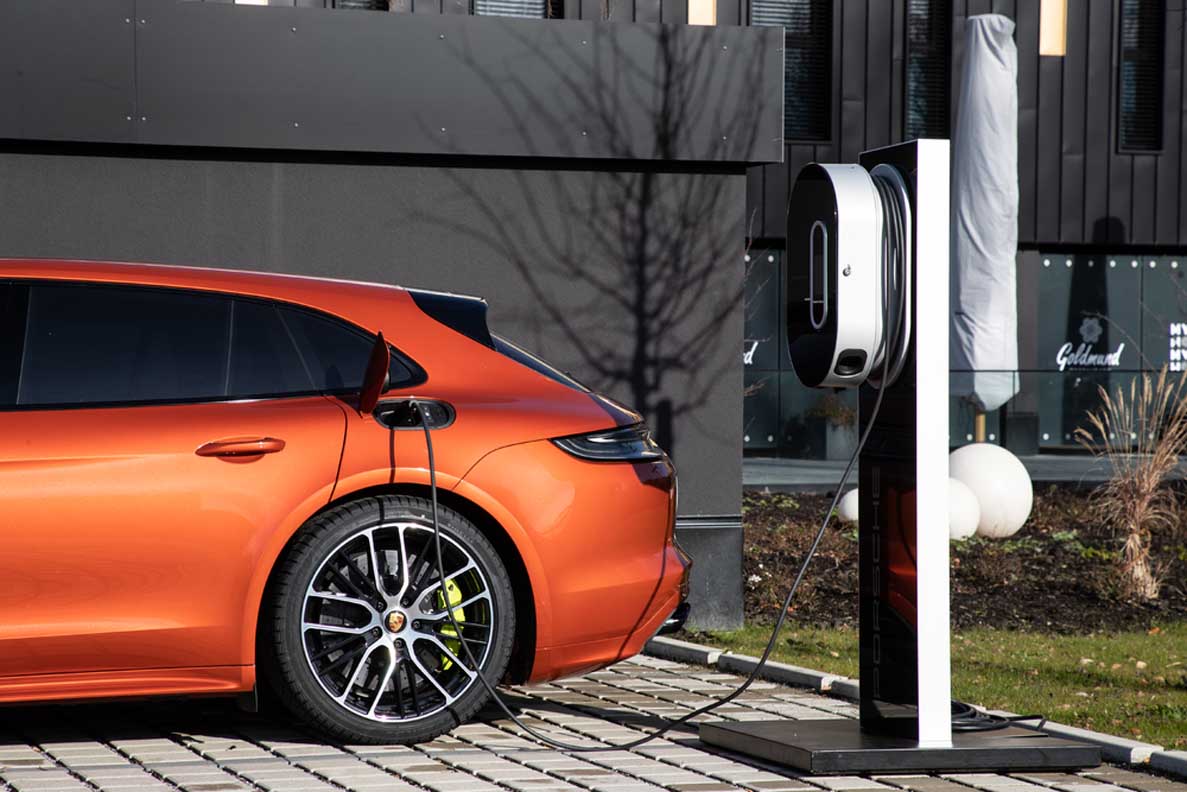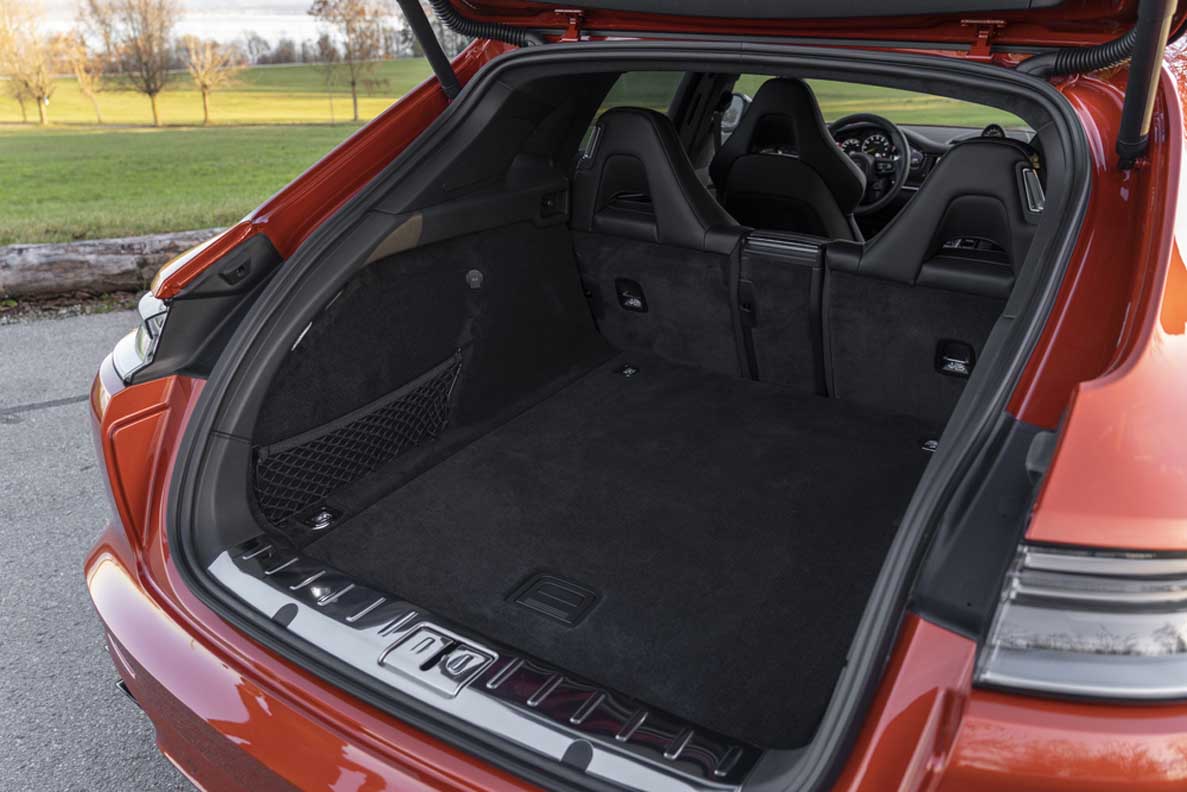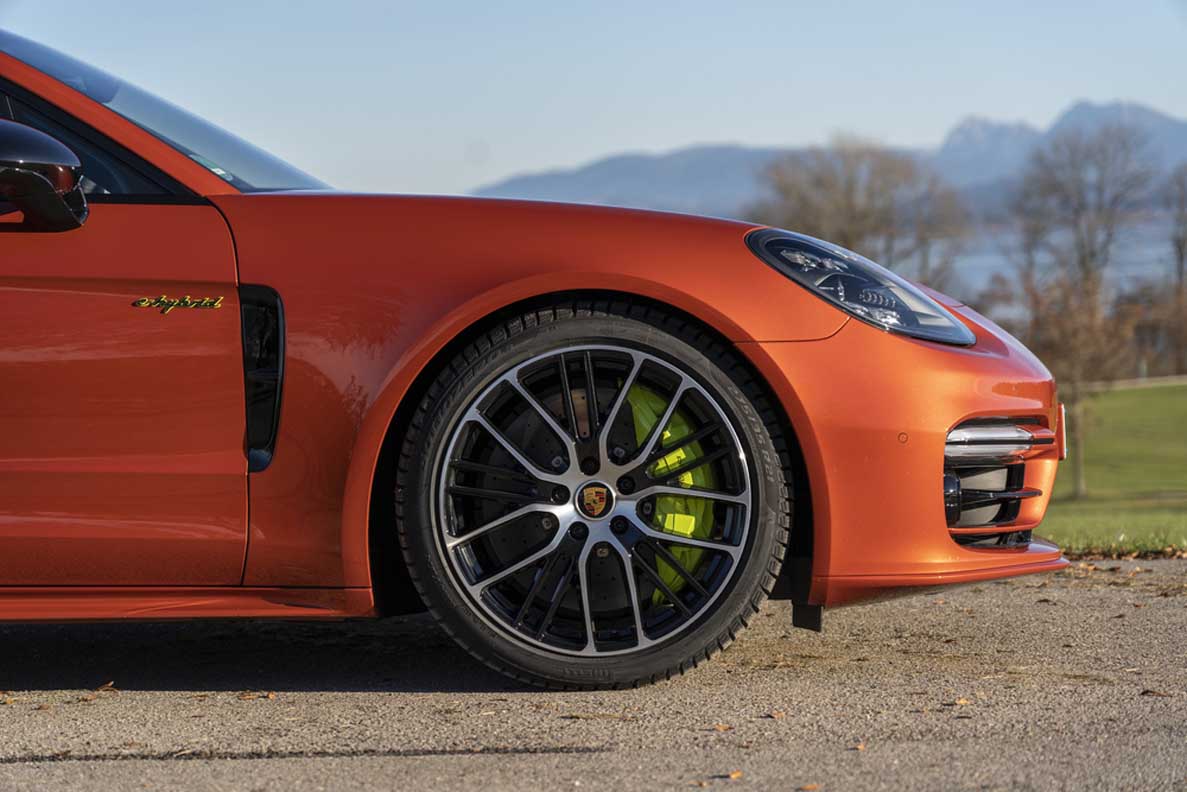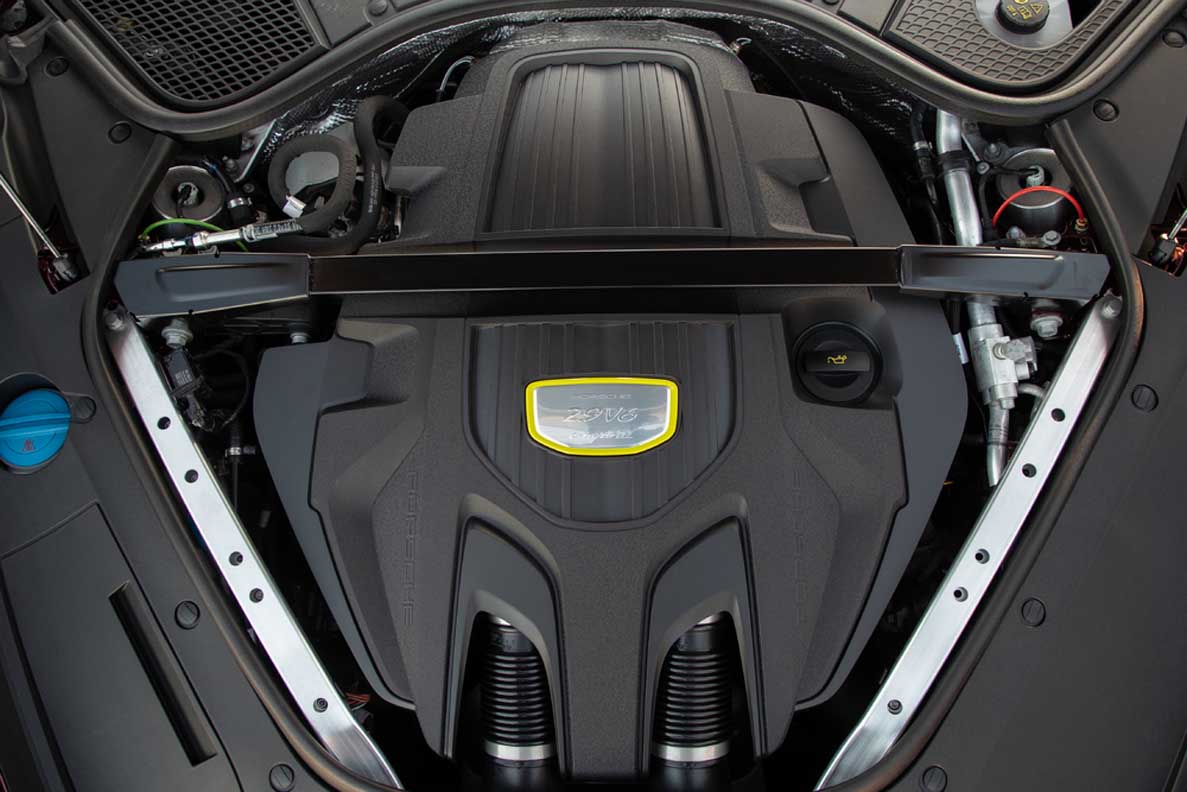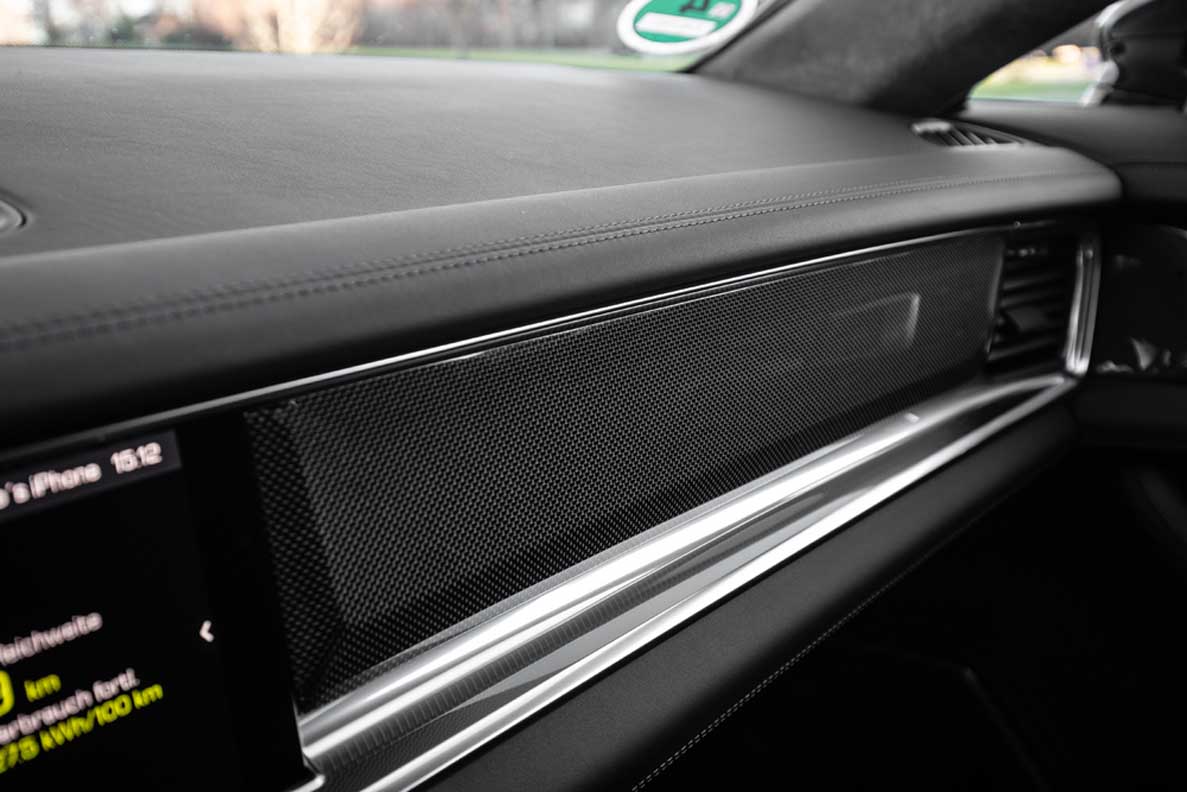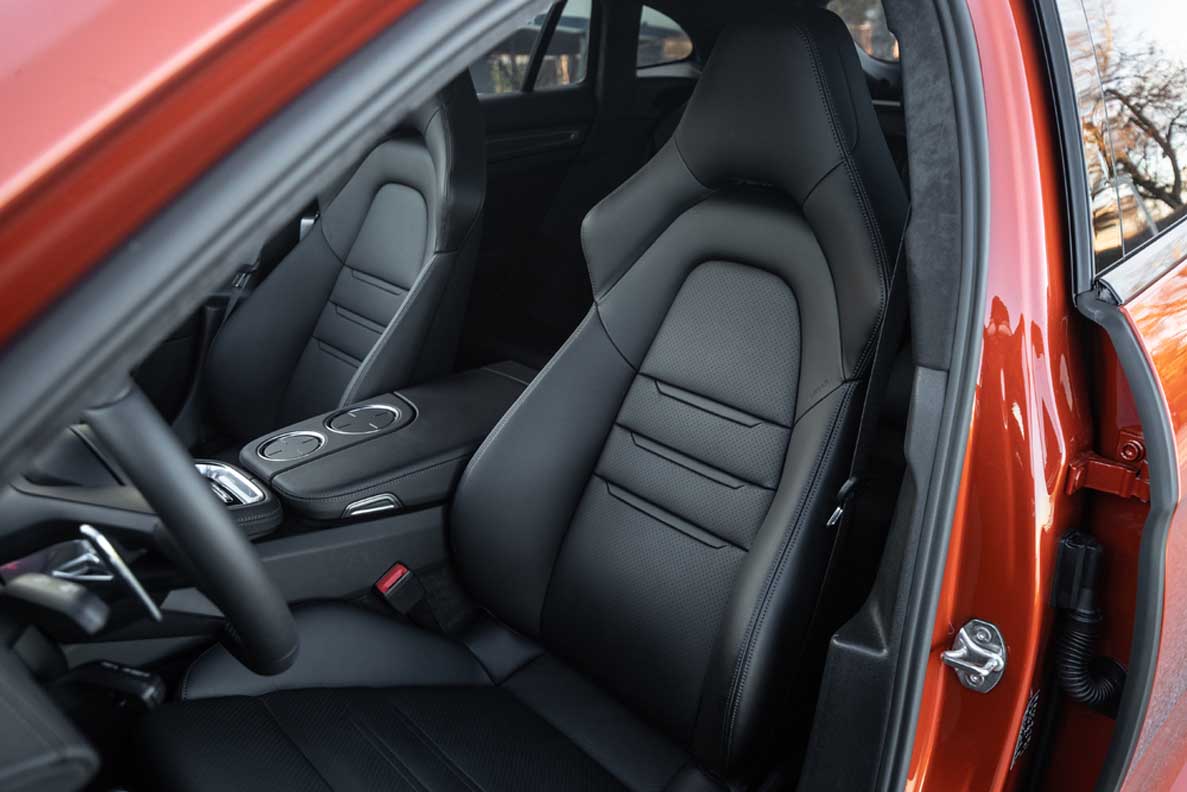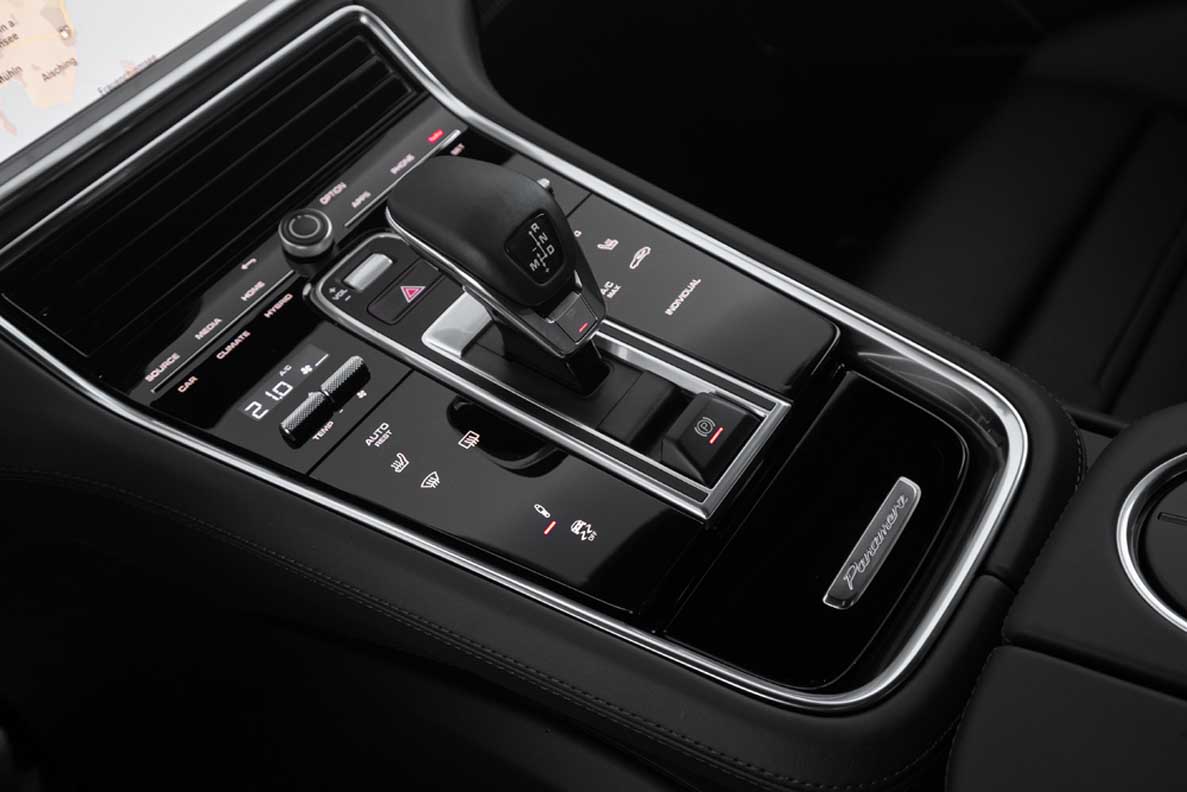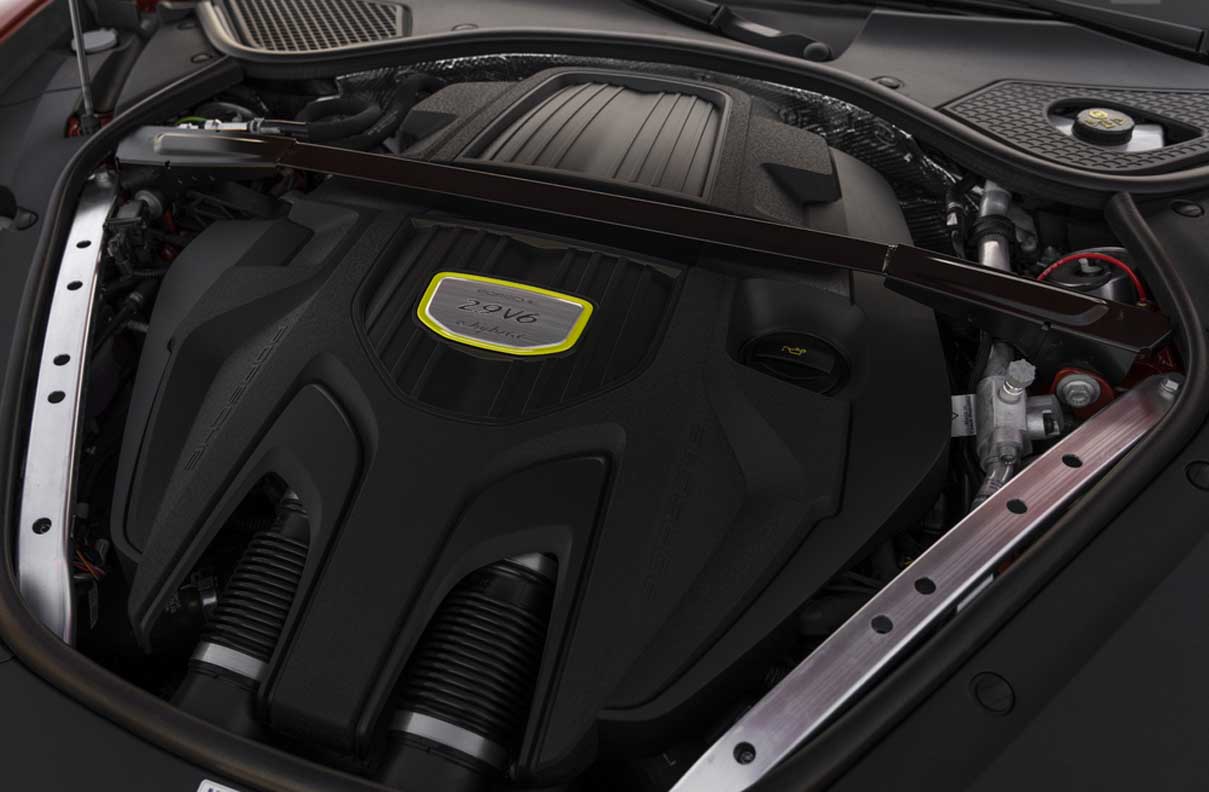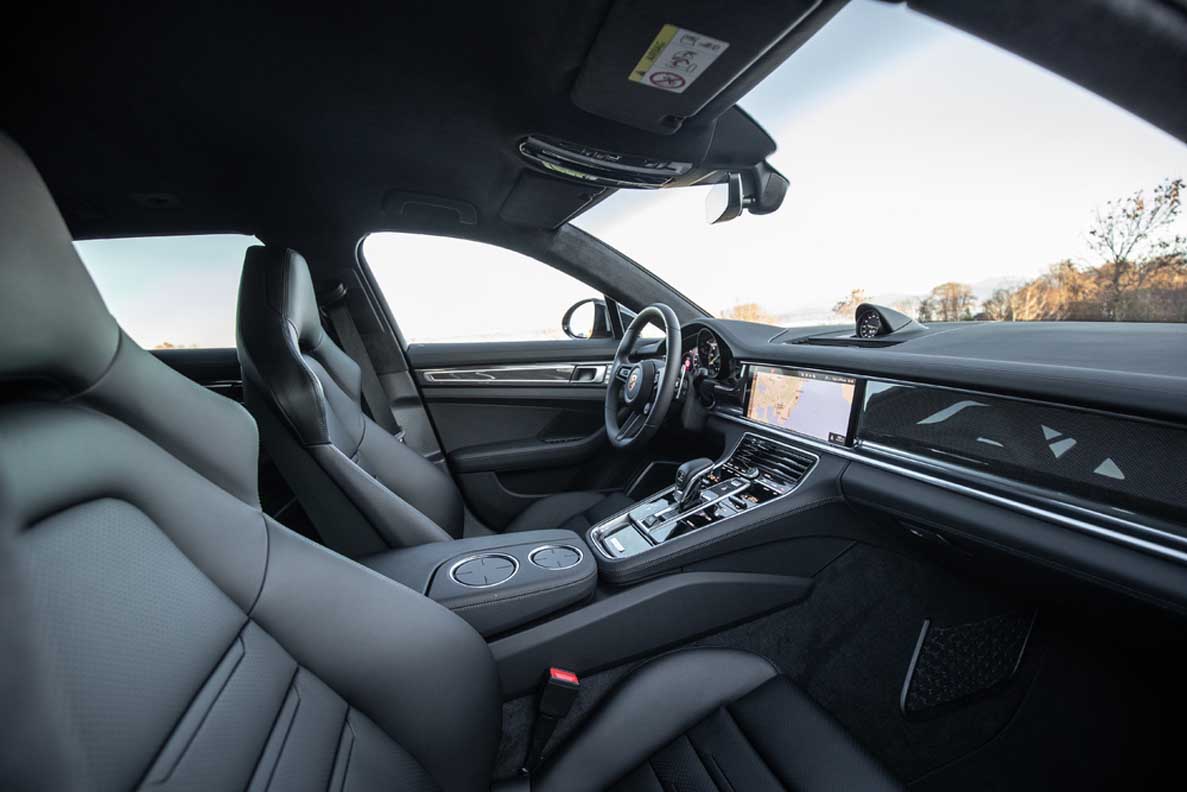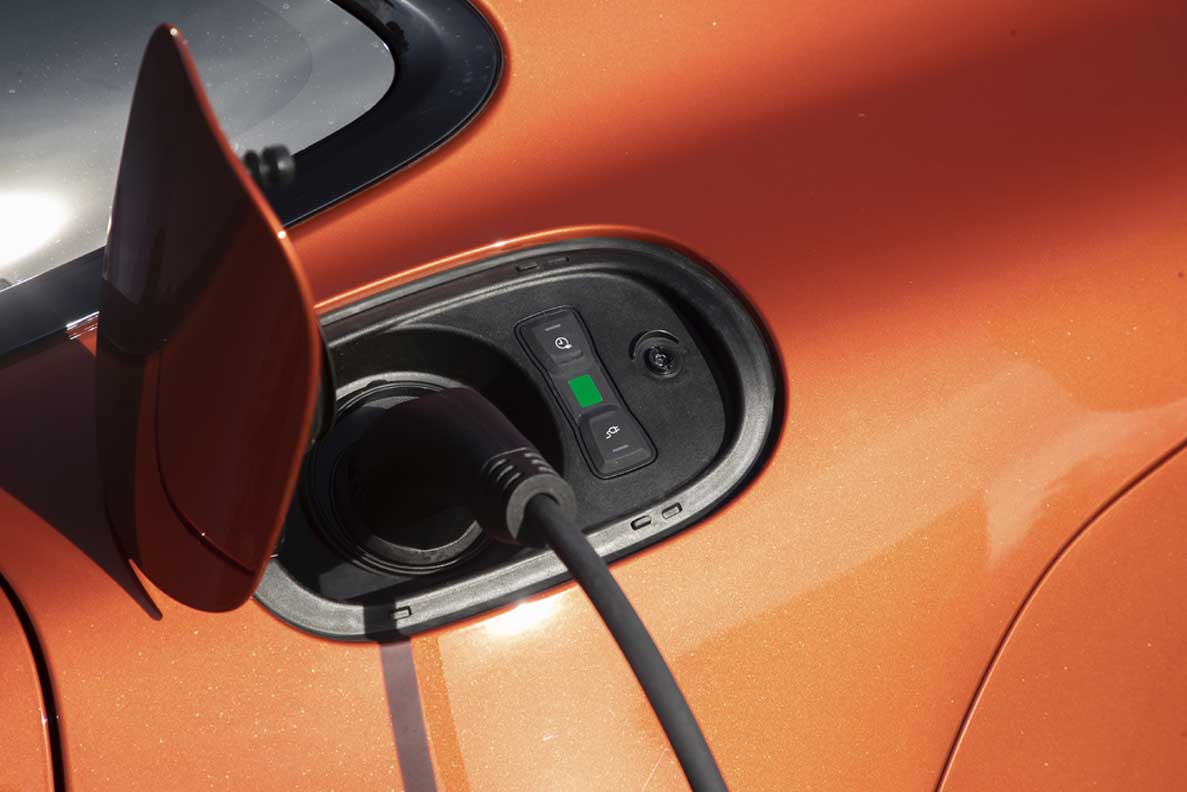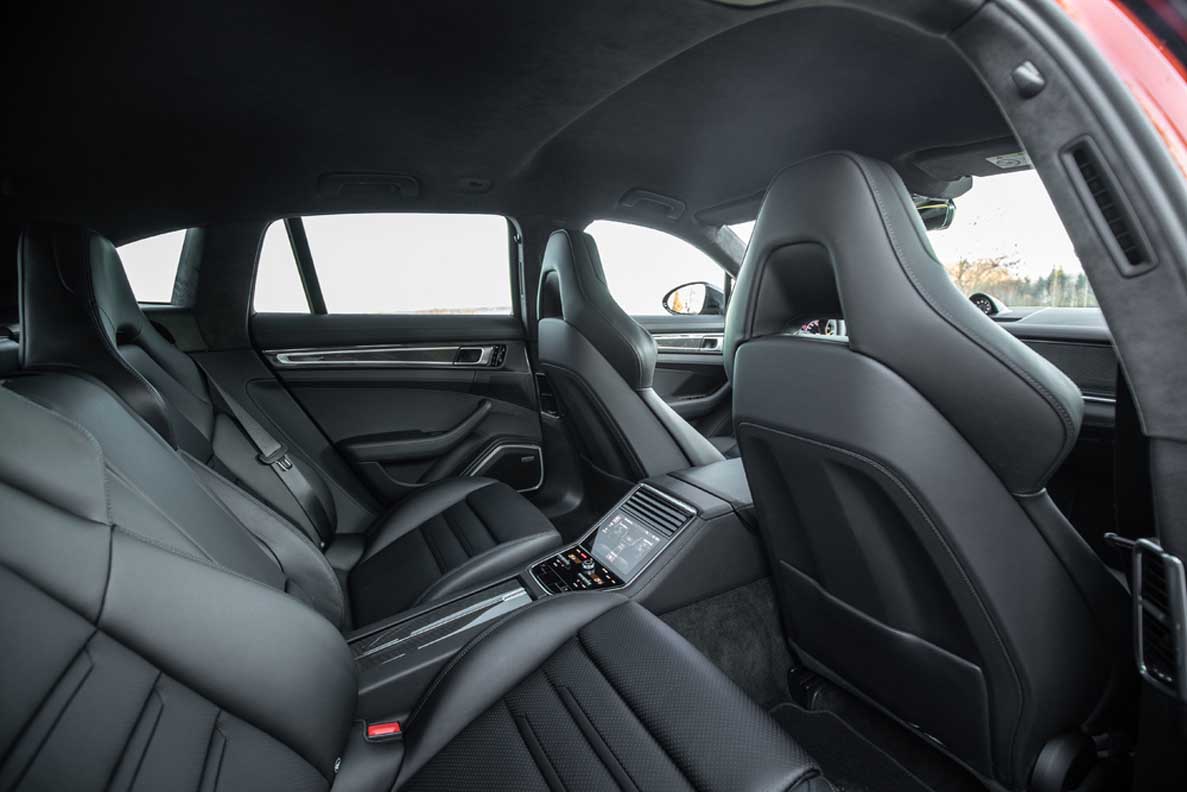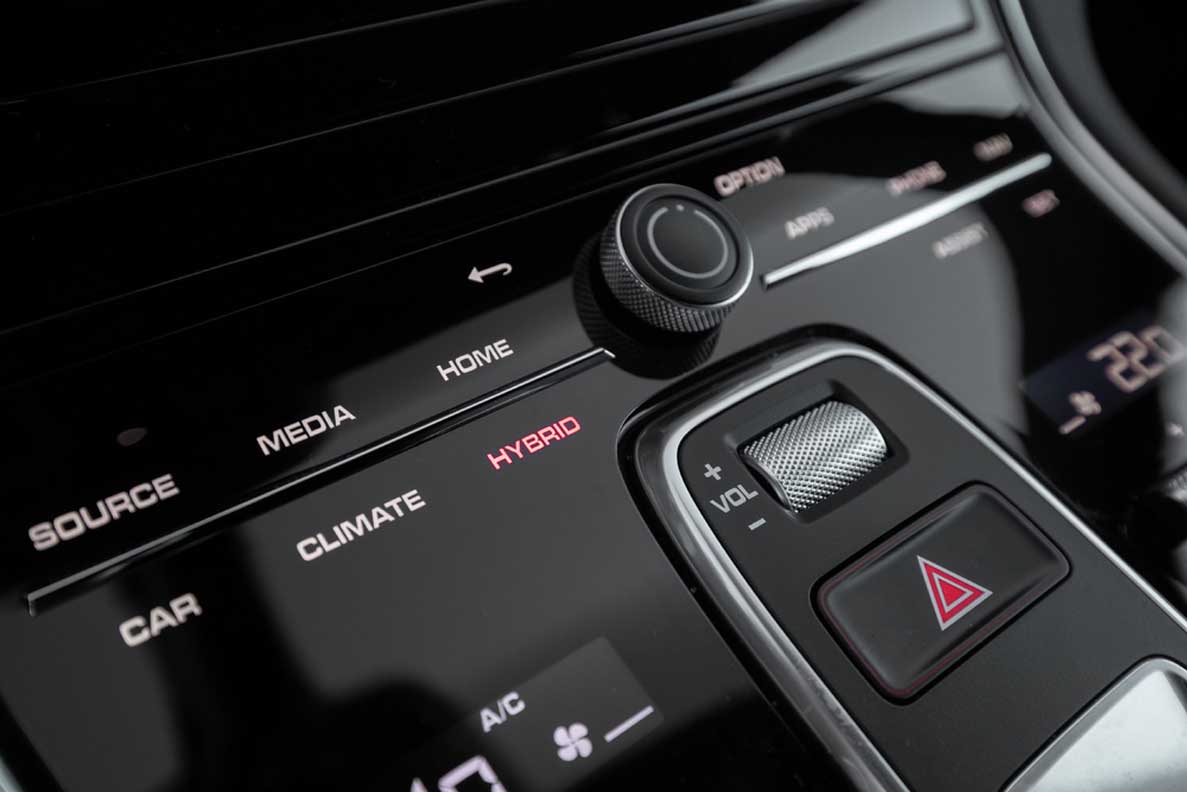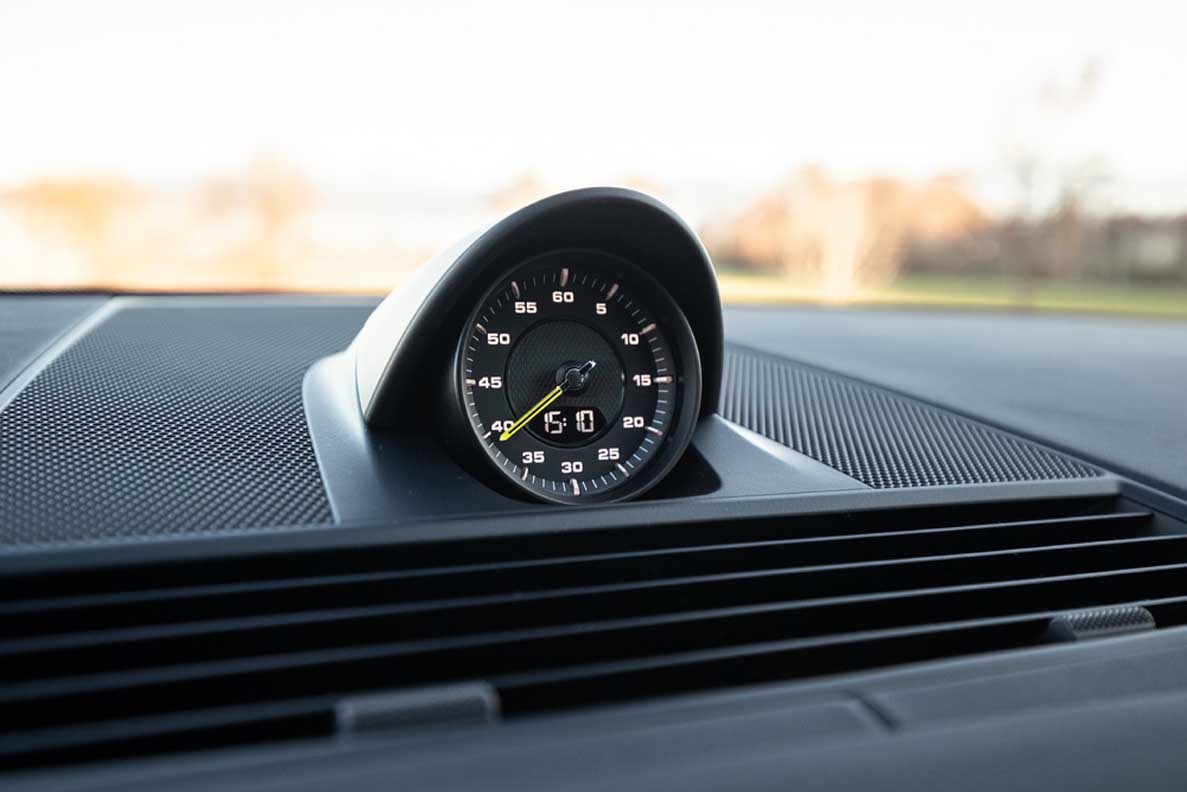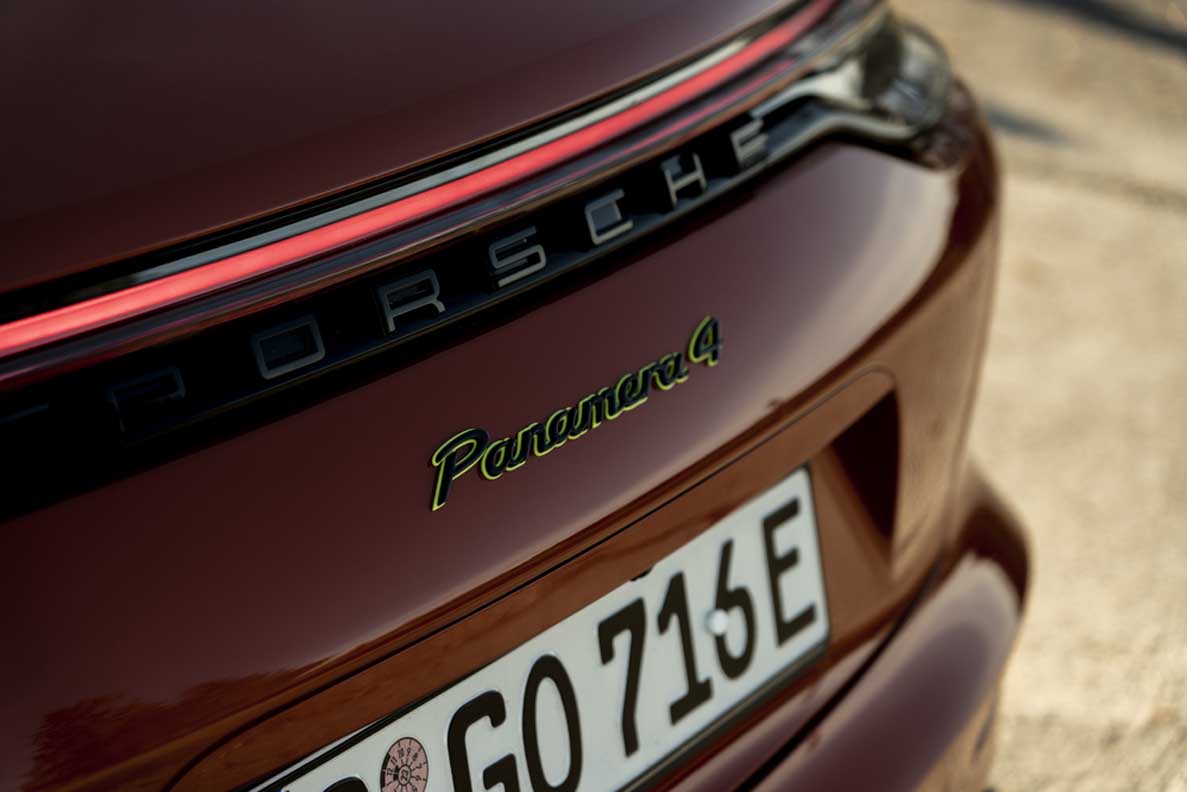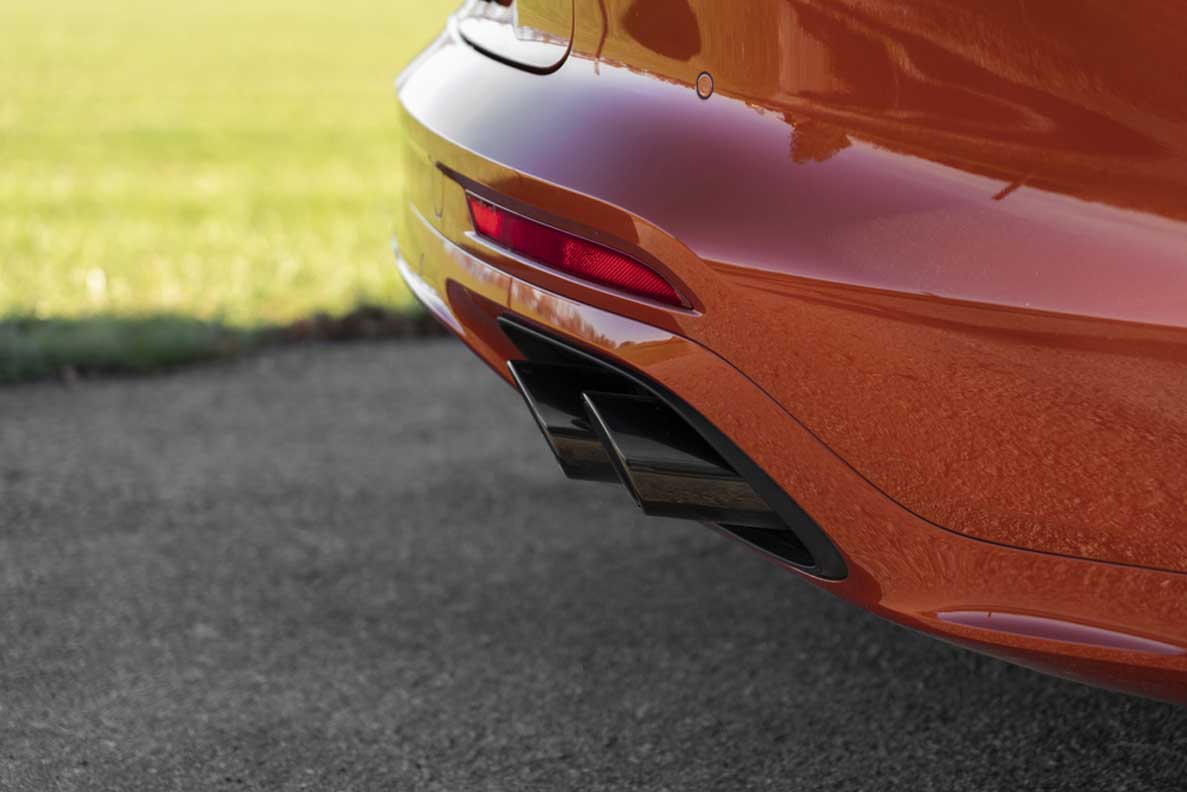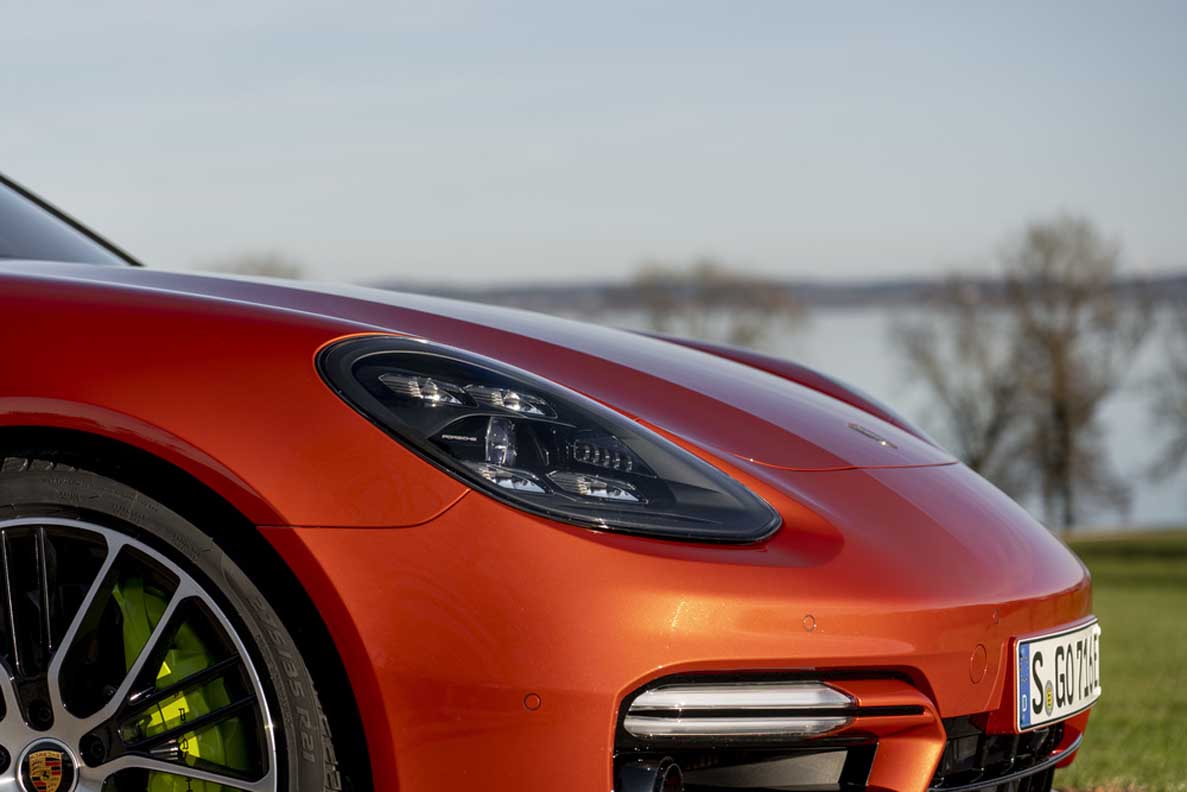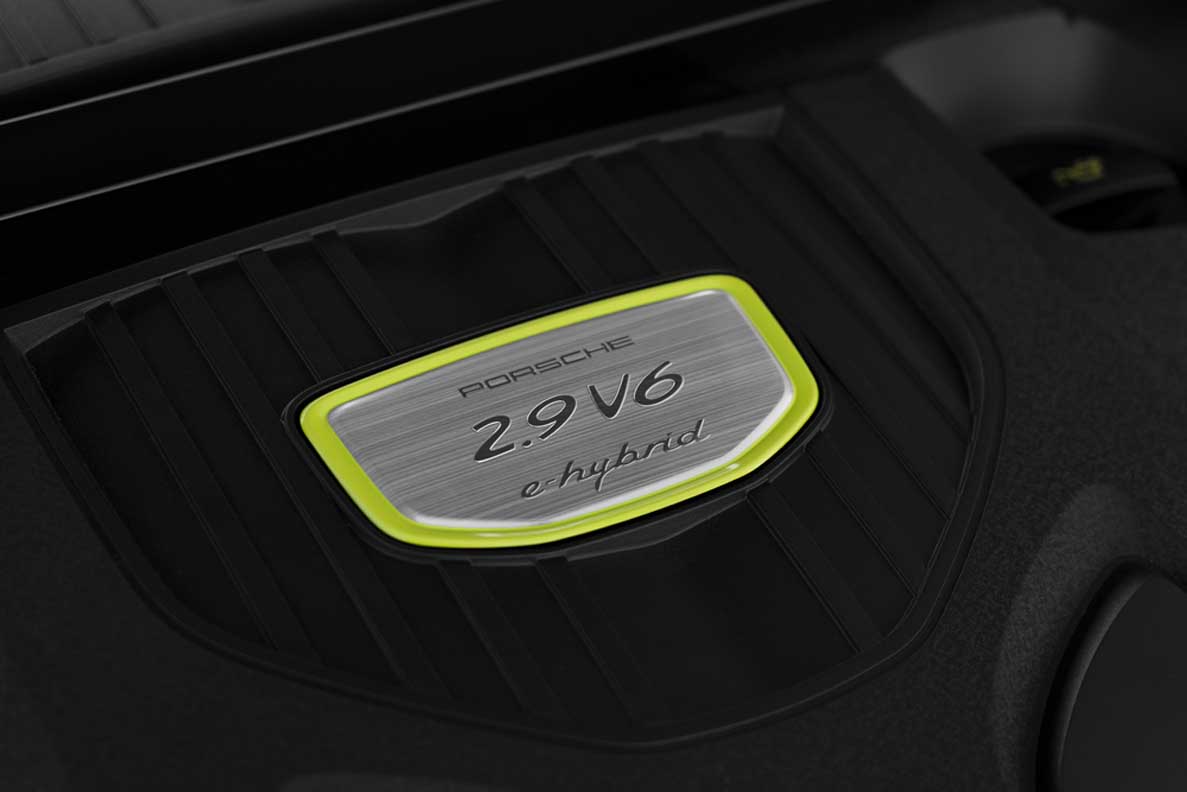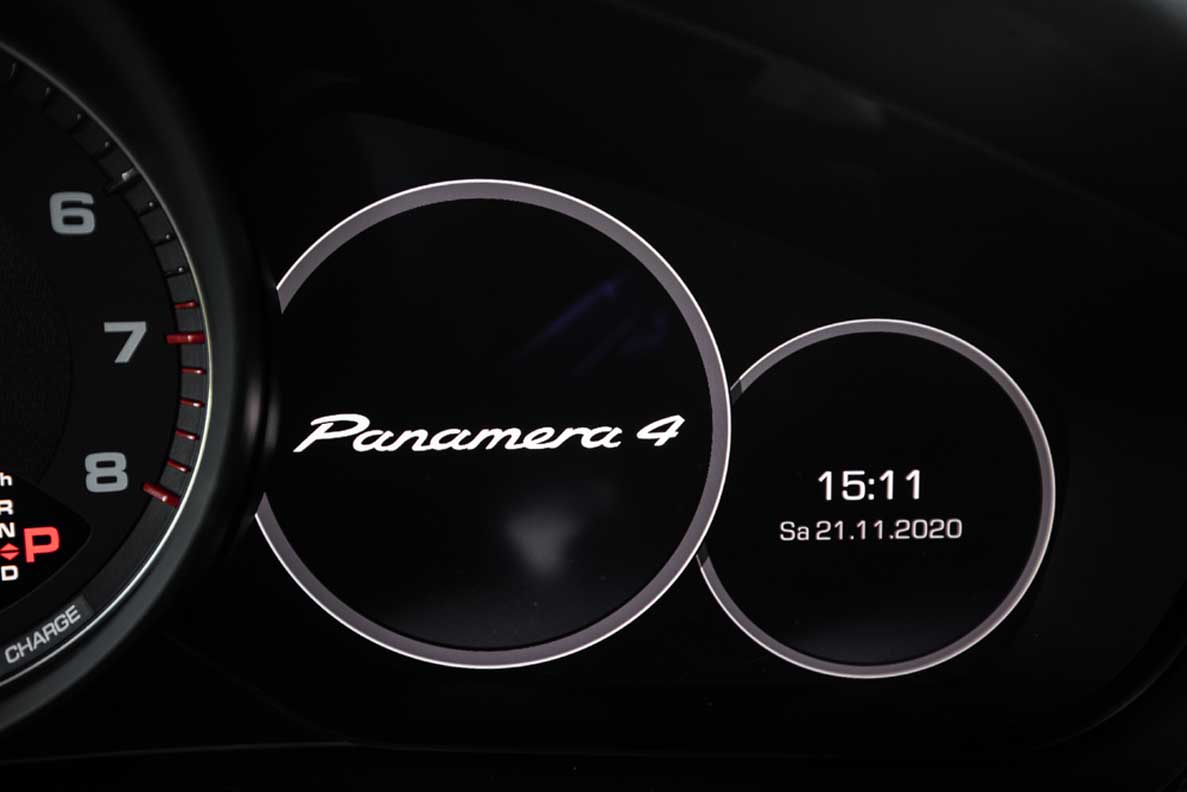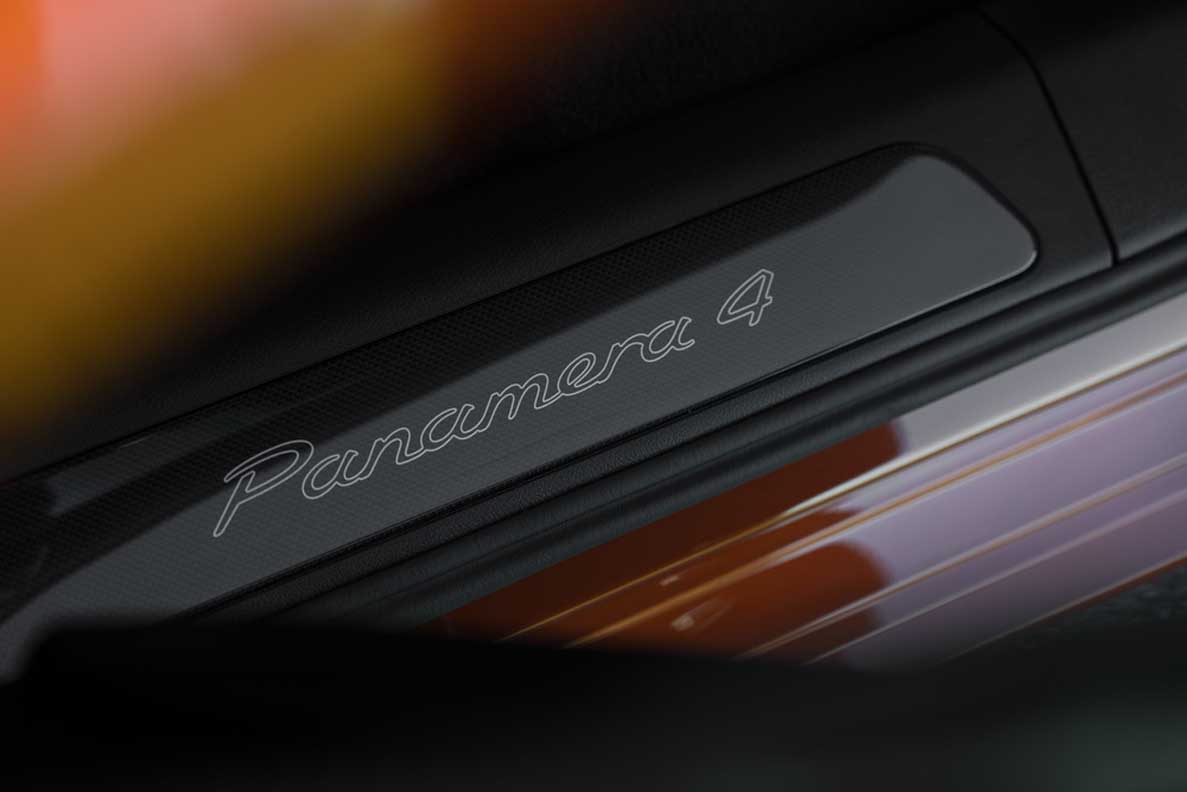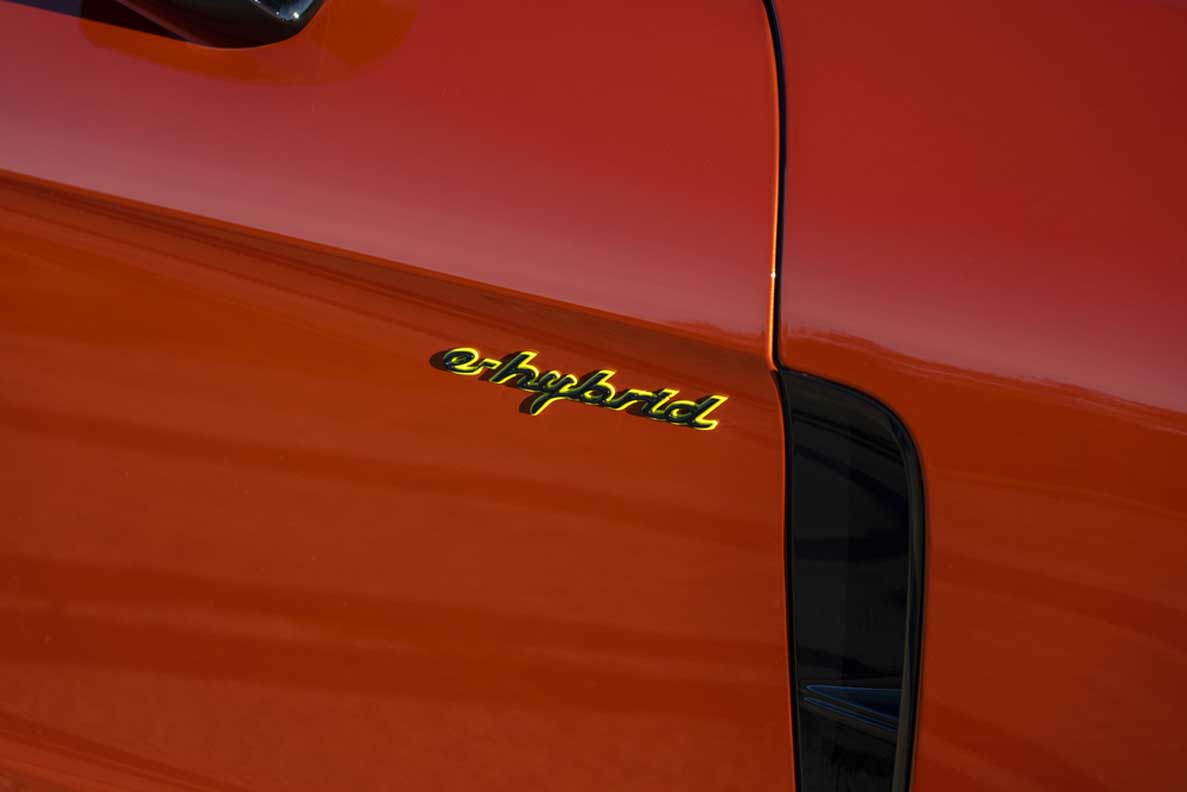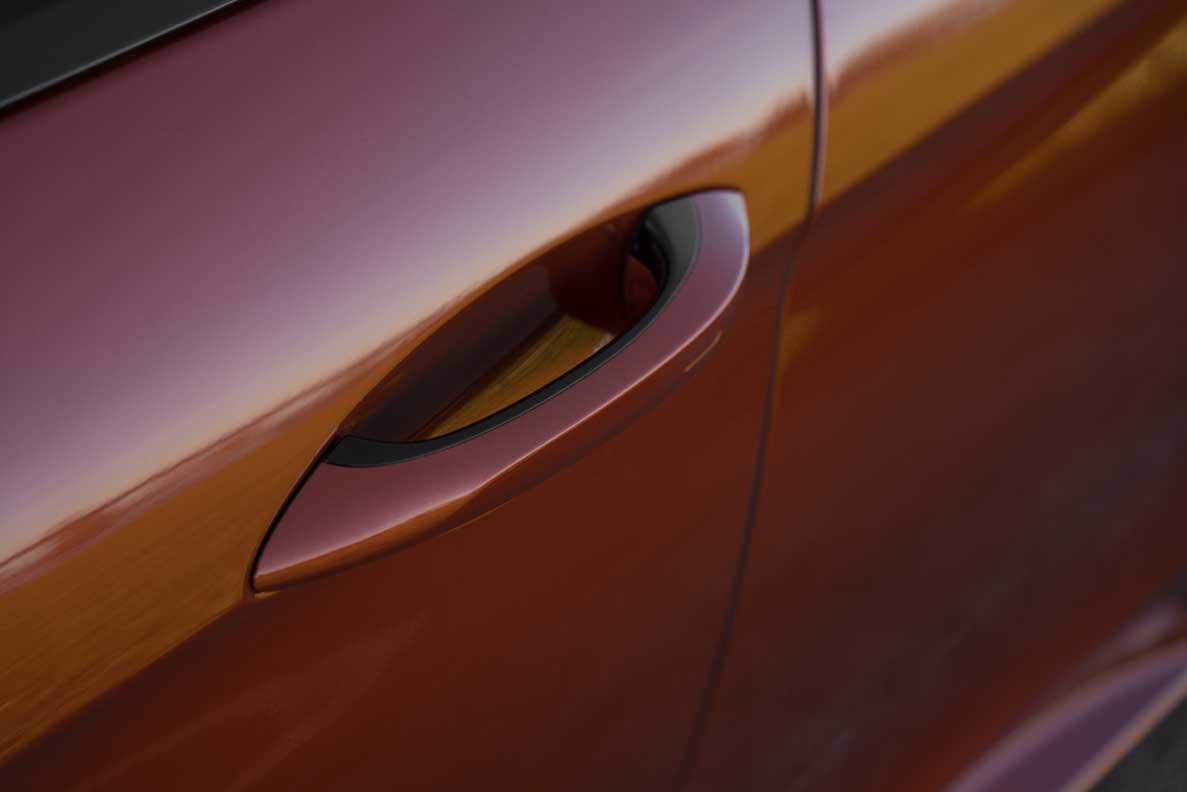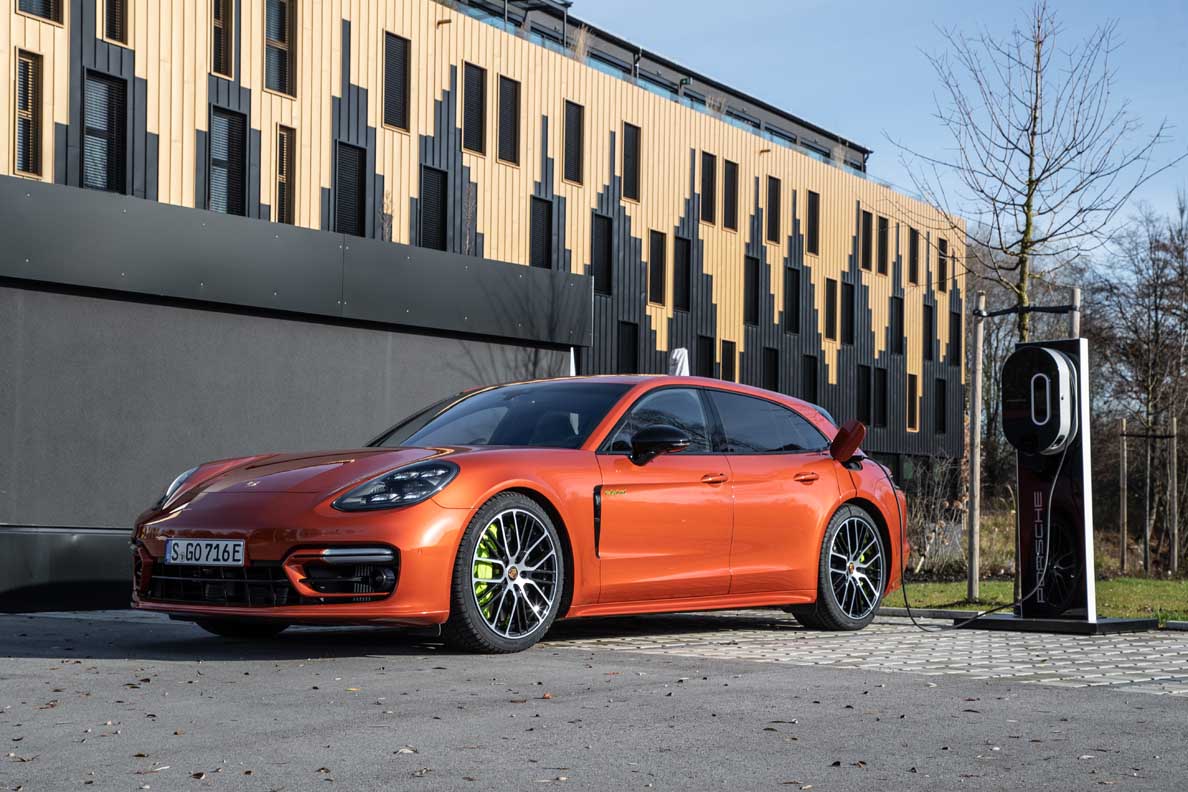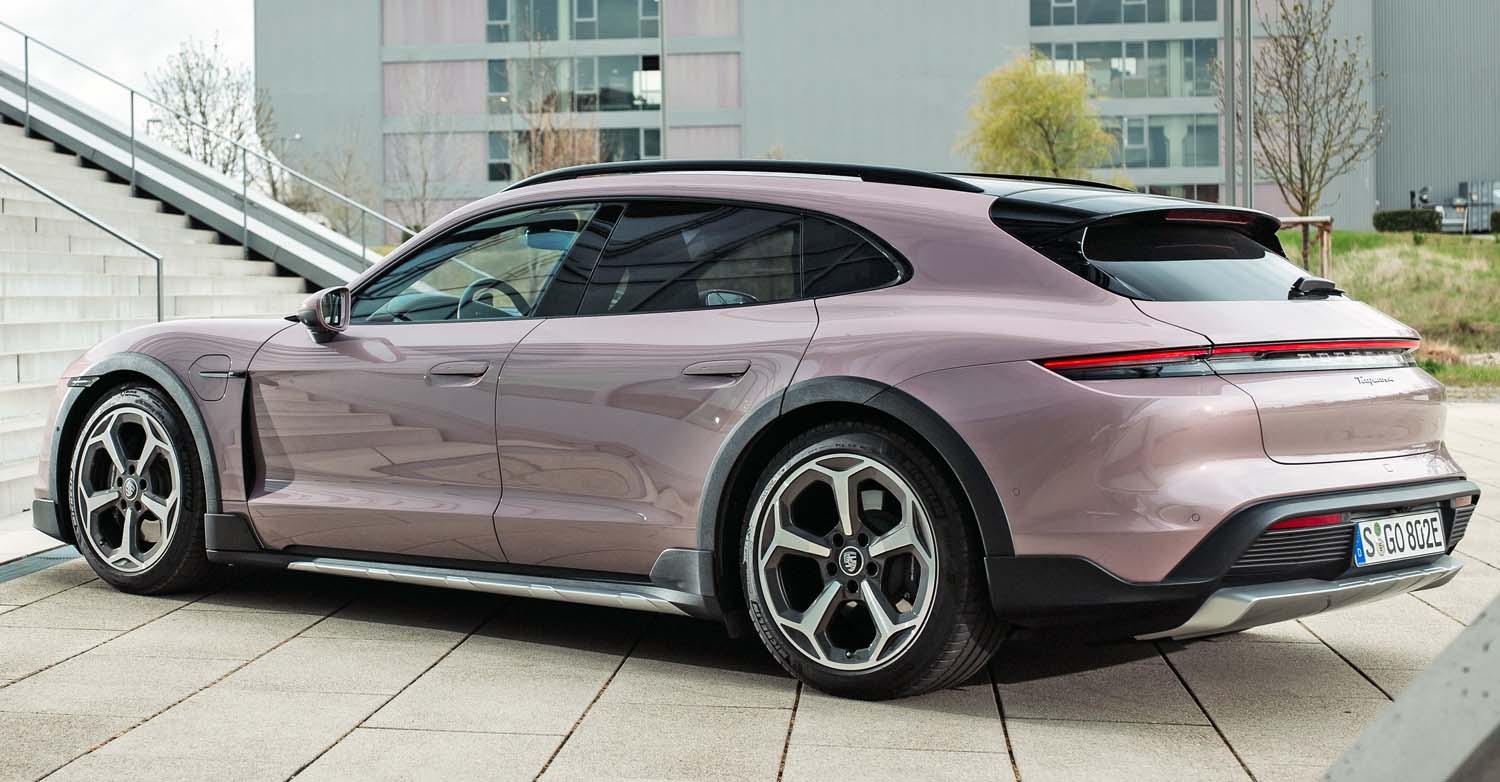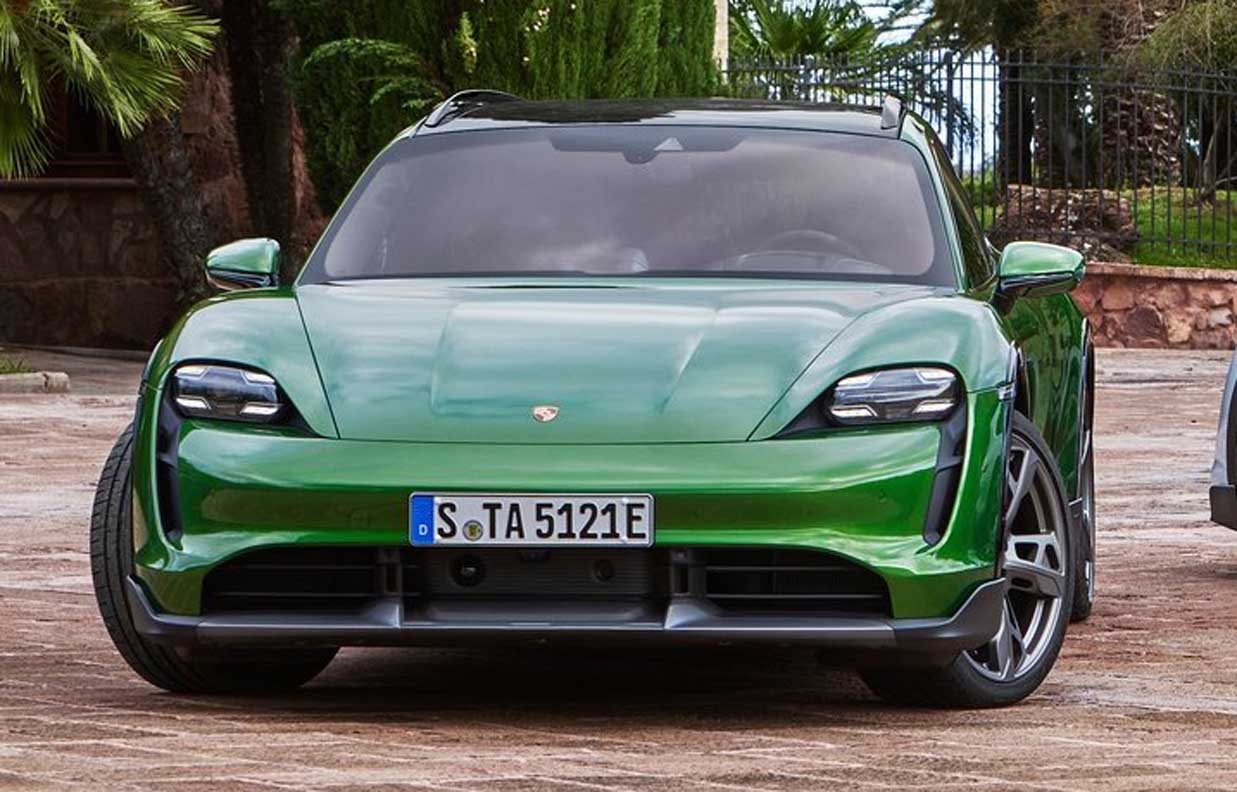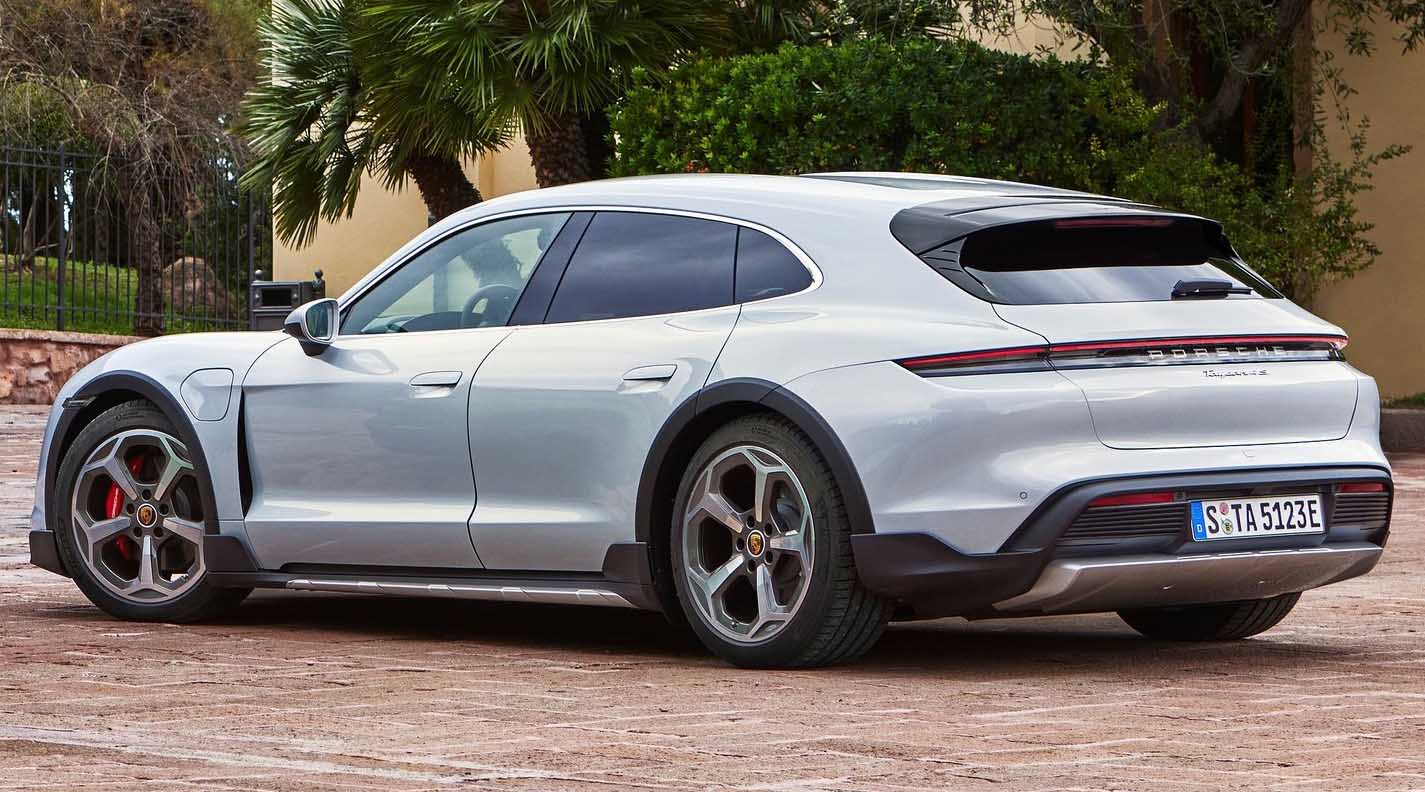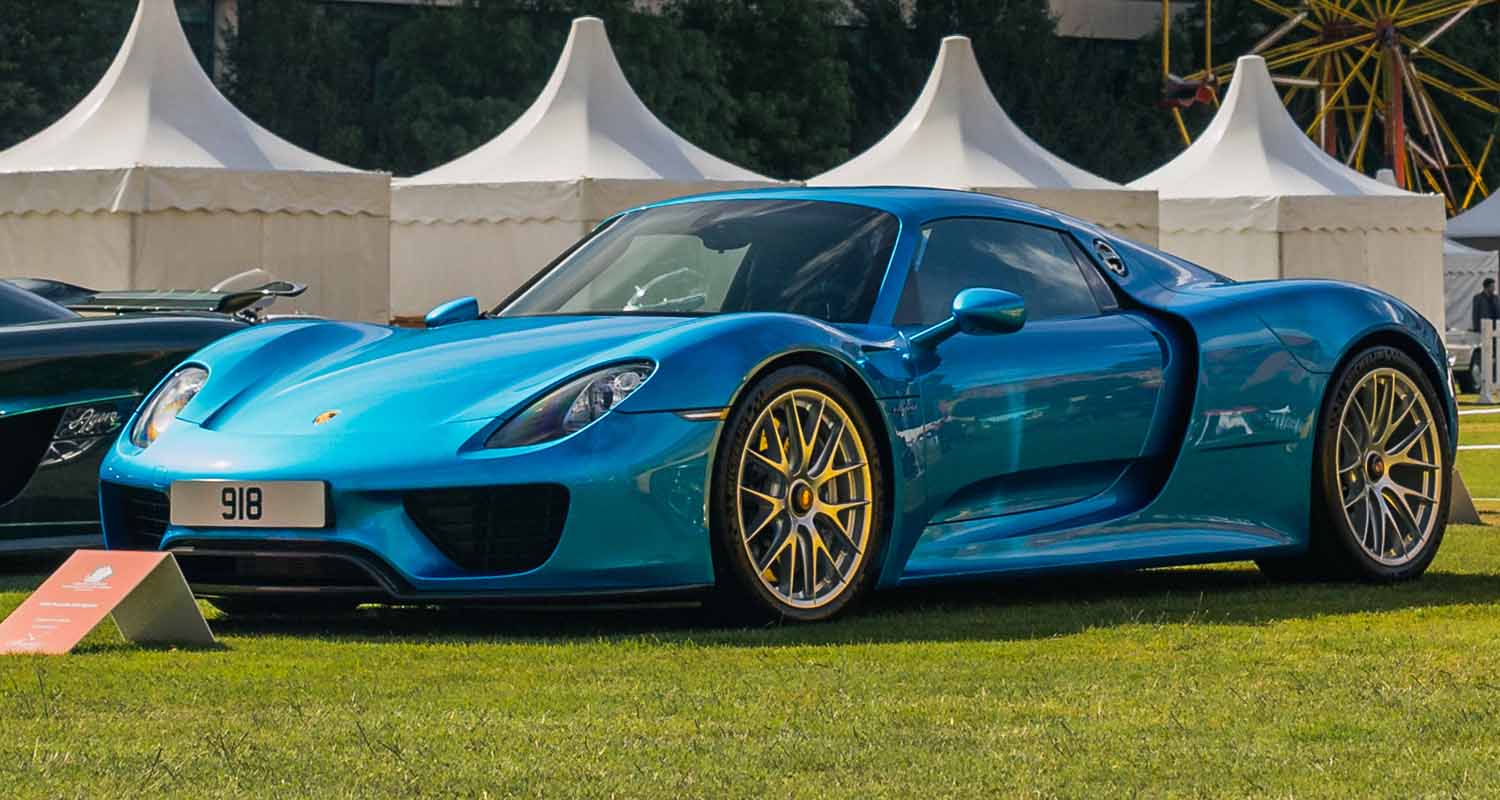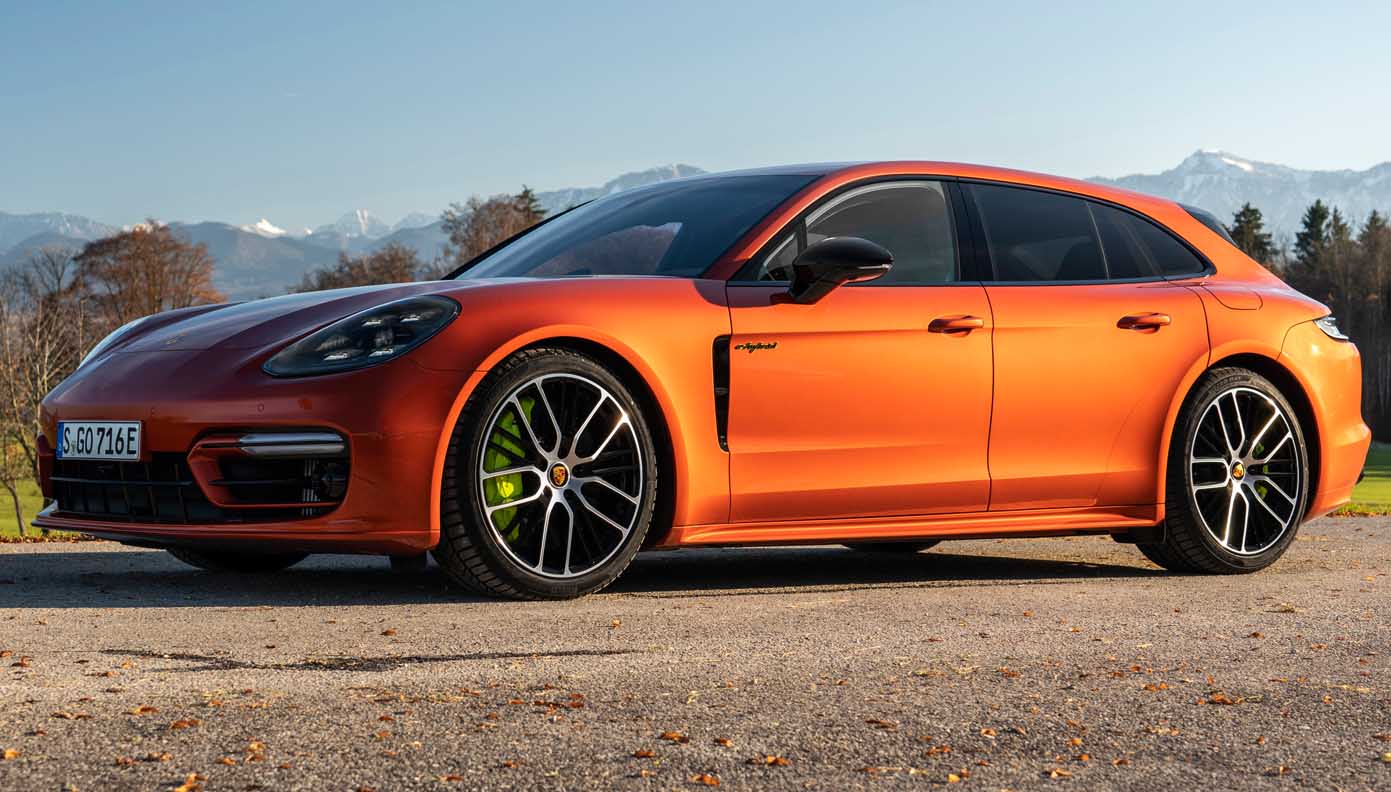
The new Porsche Panamera E-Hybrid models continue to use the same powertrain architecture as their predecessors. The heart of this is the electric motor, which has a power output of 100 kW (136 PS) and 400 Nm of torque. In combination with the respective combustion engine fitted to each model and the boost strategy derived from the 918 Spyder super sports car, this results in a unique high-performance driving experience. The electric motor is integrated into the eight-speed dual-clutch transmission (PDK) and all plug-in hybrid models from Porsche are equipped as standard with the Sport Chrono package.
Panamera 4S E-Hybrid
The new Panamera 4S E-Hybrid joins the Porsche hybrid line-up as a completely new model. With a system power output of 412 kW (560 PS) and a maximum torque of 750 Nm, the third E-Hybrid model is positioned between the completely revamped 4 E-Hybrid and Turbo S E-Hybrid derivatives. In the 4S E-Hybrid, the electric motor cooperates with the 324 kW (440 PS) 2.9-litre V6 biturbo engine. In combination with the standard Sport Chrono package, this results in outstanding performance: the standard sprint to 100 km/h is achieved in 3.7 seconds and maximum speed is 298 km/h.
Panamera 4 E-Hybrid
With a system power output of 340 kW (462 PS), the Porsche Panamera 4 E-Hybrid is the entry-level model in the hybrid family of this product line. The electric motor works together with a 2.9-litre V6 biturbo engine with an output of 243 kW (330 PS) and performance has been improved compared with its predecessor: the Porsche Panamera 4 E-Hybrid accelerates from a standing start to 100 km/h in just 4.4 seconds (-0.2 s); top speed is 280 km/h (+2 km/h).
Panamera Turbo S E-Hybrid
The most powerful model in the Panamera line-up is still a plug-in hybrid: the system power of the Panamera Turbo S E-Hybrid has been increased from 500 kW (680 PS) previously to 515 kW (700 PS). This is due to the four-litre V8 biturbo engine now delivering 420 kW (571 PS) instead of the previous 404 kW (550 PS). In perfect interaction with the electric motor, this results in a maximum system torque figure of 870 Nm. The car sprints from zero to 100 km/h in 3.2 seconds – 0.2 seconds faster than its predecessor. It reaches a top speed of 315 km/h – an improvement of five km/h.
Plug-in technology and driving modes
All new Panamera hybrid models benefit from a more powerful high-voltage battery and optimised driving modes. There is now a much greater focus on highly efficient charging while driving and, depending on the selected driving mode, the battery charges faster. At the same time, intelligent energy recuperation allows an even more efficient use of the electric drive.
The electric motor draws its energy from a high-voltage battery installed at the rear of the car. To achieve a long electric range and extend the reserve capacity for electric boosting, the battery’s gross capacity has been increased from 14.1 to 17.9 kWh compared with the previous hybrid models thanks to optimised battery cells. This corresponds to an increase of exactly 27 per cent. The installation space for the battery beneath the load compartment floor remains compact, providing spacious luggage capacity from 403 to 1,242 litres in the sports saloon (Sport Turismo: 418 to 1,287 litres). The additional optimisation of its driving modes has made it possible to increase electric range by up to 30 per cent. The new Panamera Turbo S E-Hybrid can be driven with zero local emissions for up to 50 km according to WLTP EAER City (NEDC: up to 59 km), while the 4S E-Hybrid can cover up to 54 km according to WLTP EAER City (EDC: up to 64 km). The new Porsche Panamera 4 E-Hybrid is particularly efficient and has an all-electric range of up to 56 km according to WLTP EAER City (NEDC: up to 64 km).
Optimised modes for electric driving experience
Four driving modes, E-Power, Hybrid Auto, Sport and Sport Plus, are selected using the mode switch that is part of the standard Sport Chrono package. Two additional modes, E-Hold and E-Charge, are activated via the Porsche Communication Management (PCM).
To further enhance the electric driving experience, the modes in which the high-voltage battery is charged during driving have been optimised. The new Panamera hybrid models start in E-Power mode as standard. As usual, the ideal mix of interaction between electric motor and combustion engine is controlled with the accelerator. The Hybrid assistant, which is accessible in the left-hand side of the instrument cluster display, visualises in real time the relationship between the torque currently used and the maximum available. The electric motor’s maximum torque is reached when the accelerator pedal is depressed to an angle of approximately 50 per cent. In E-Power mode, the combustion engine is activated only with pedal angles from approximately 60 per cent. The noticeable free pedal travel between 50 and 60 per cent of the accelerator pedal angle ensures optimum electric driving control. If the high-voltage battery falls below the minimum charge level for the E-Power mode, the system automatically switches to the Hybrid Auto mode.
The intelligent Hybrid Auto mode offers the greatest operating efficiency for urban and cross-country driving. For the best possible combination of electric motor and combustion engine, the optimum operating strategy is continuously derived from information relating to driving profile, state of charge, topography, speed and navigation destination. All-electric driving is used in situations where, in terms of overall efficiency, it is the most appropriate option. Hybrid Auto mode also adapts optimally to the driver’s habits. When route guidance is activated, the electric drive is used more intensively during urban driving in particular. The high-voltage battery is charged more on sections of road where the combustion engine is active.
In E-Hold mode, the state of charge of the high-voltage battery is maintained at the level recorded when the mode is selected. This means that the battery energy can be used at a later time for electric driving or boosting. In E-Charge mode, the combustion engine charges the battery when driving by generating a higher output than required for the current driving situation. This so-called load point shift provides the driver with the option of predictively increasing the electric range. The E-Charge mode of the new hybrid models follows an adapted charging strategy for the battery. The target charge level of the battery was reduced from the previous 100 to 80 per cent. The reason for this is due to the fact that the car’s battery, like the one in a smartphone, charges significantly more slowly and less efficiently from a charge level of around 80 per cent. This also ensures that full recuperation power is available at all times. Specification of a constant charging power of 7.2 kW means that the battery is charged quickly and in a reproducible way. Overall, E-Charge mode is therefore now more efficient and can be experienced more directly than before.
In both the performance-oriented modes, Sport and Sport Plus, the combustion engine is always in operation. Sport mode offers extremely sporty vehicle characteristics for fast driving on country roads and motorways; in this mode, the drive system and chassis are switched to the Sport setup. The battery is charged to a minimum level to be able to provide a sufficient amount of boost for a sporty driving style. In Sport Plus mode, the focus in all Porsche models is on maximum sportiness: the drive and chassis are adapted for high performance. On the Panamera hybrid models, Sport Plus mode additionally differs from Sport mode due to the fact that the battery is charged as quickly as possible to 80 per cent. This takes place with a constant high charging power of 12 kW.
